Two words synonymous in any foreigner’s mind are Brazil and Amazon. Yet, the Brazilian Amazon doesn’t receive anywhere close to the same number of visitors as other famous locations in Brazil like Rio de Janeiro and São Paulo.
Of the 6.5 million tourists who travel to Brazil, just 2% visit the Amazon Rainforest (pre-covid).
The Amazon Rainforest is a one-of-a-kind destination, especially for nature enthusiasts. 10% of the world’s known species call the rainforest home. But the Amazon Rainforest’s existence is finite.
Every year the Amazon’s risk of degradation and destruction increases as the effects of deforestation and climate change grow stronger and unchecked. The World Wildlife Fund reports that 17%, or a land area the size of France, may have already been eradicated.
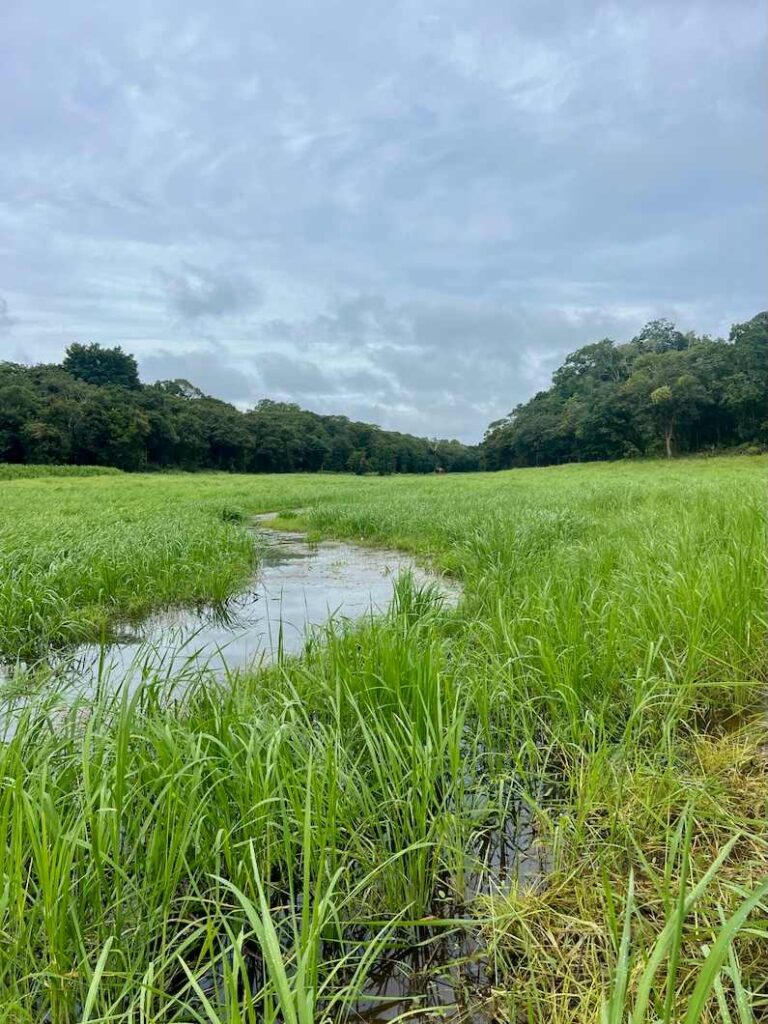
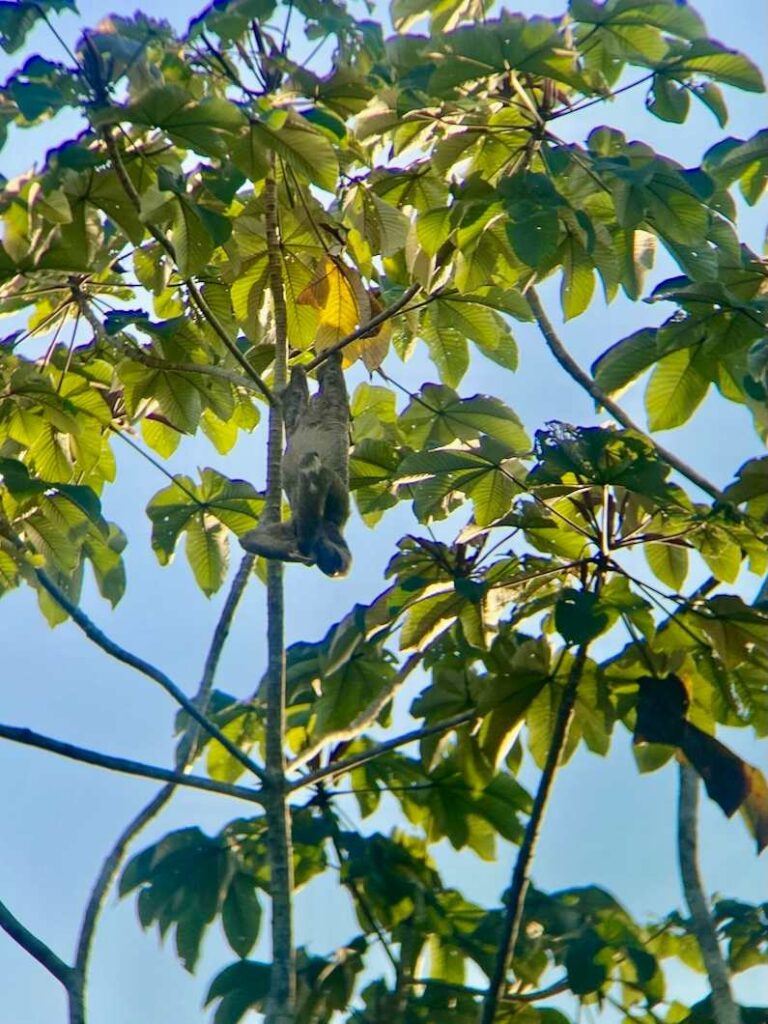
The time to visit is now! But a tourist destination the size of TWO Indias and spread across eight countries, where does one begin?
It is more than just a little overwhelming.
For travelers looking for an immersive experience in the Brazilian Amazon, I recommend the all-inclusive Dolphin Lodge. Four hours away from Manaus, the Dolphin Lodge is a remote yet comfortable accommodation that offers twice daily, educational tours into the Amazon.
If you only have a handful of days to dedicate to visiting the Amazon Rainforest in Brazil, this blog will detail the BEST and EASIEST way to plan this trip of a lifetime.
When to plan your visit to the Amazon Rainforest in Brazil
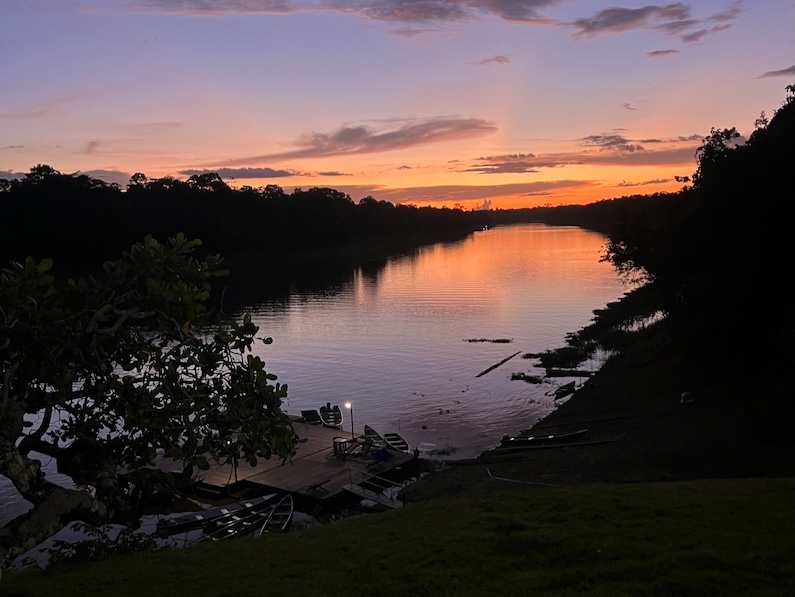
The Brazilian Amazon can be visited and enjoyed at any time of the year.
The city of Manaus is just a couple hundred miles south of the equator. Predictably, this region’s climate is hot and humid. It rains year round and locals like to say there are months where it rains and other months where it rains more.
Rainfall varies each year. Recently the Amazon has faced brutal droughts. In 2023, the Amazon experienced its most extreme drought. That year, the Negro River near Manuas was measured at its lowest recorded level.
What future visitors need to understand before planning their trip is that their experience may vary depending on the water levels of the Amazon’s rivers and lakes.
Brazilian Amazon’s Full and Dry Seasons
Besides the rainy and rainier seasons, the two more important seasons to pay attention to in the Brazilian Amazon are the Estação Cheia, or “Full Season” and Estação Seca, or “Dry Season”.
Full and dry correspond to high and low river and lake water levels.
Higher water levels (Estação Cheia) occur between April and September. This time of year is the best for navigating the Amazon’s igapós and seeing the rivers at their highest level along the tree line.
If staying at a resort with rooms over the water (like Dolphin Lodge), these rooms tend to look a little prettier during the Estação Cheia.
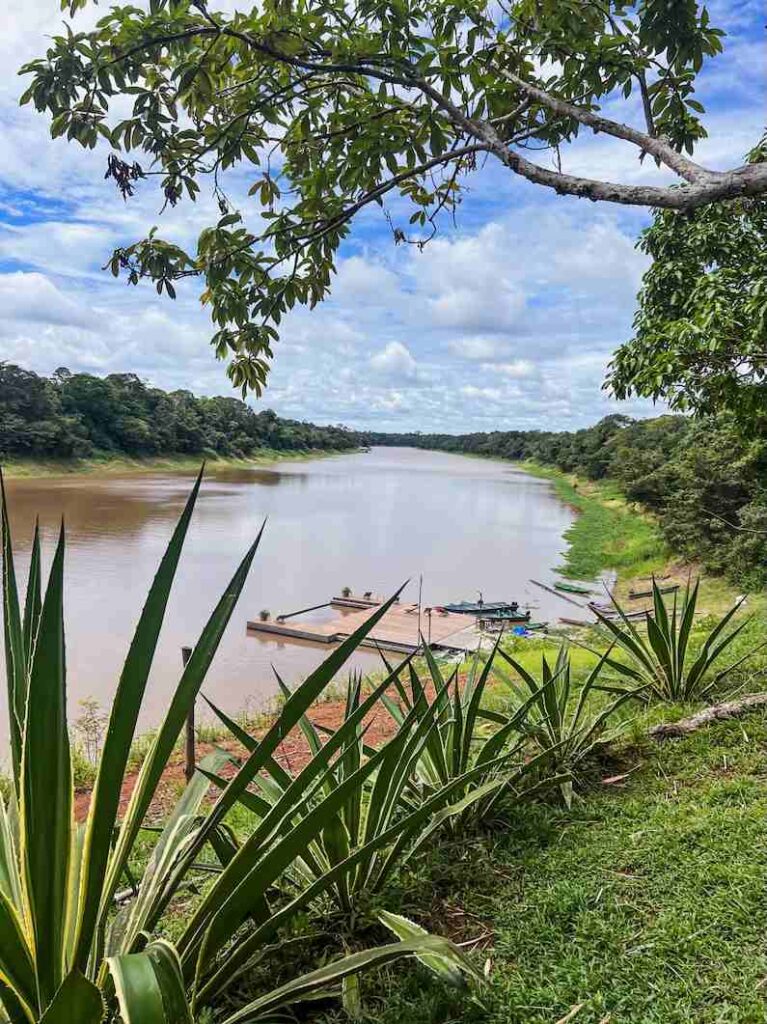
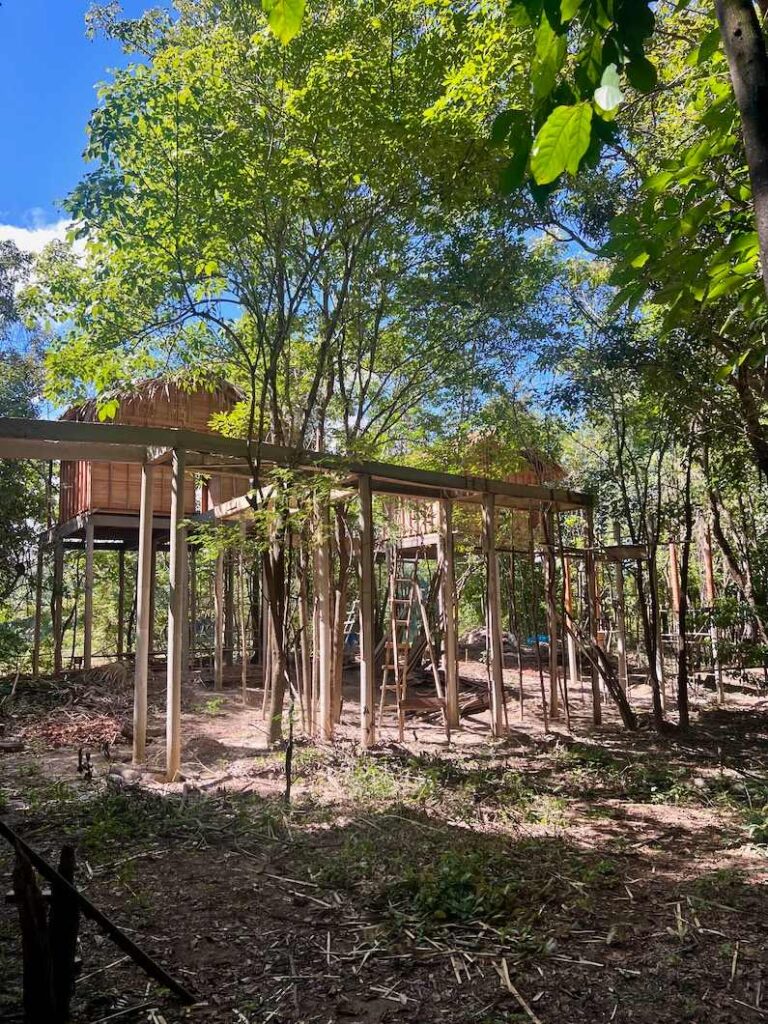
What is an igapó?
Igapó is a Tupi word meaning river of roots. Igapós only form during the Estação Cheia when rainwater floods a low-lying rainforest area with “blackwater.” These flooded forest areas can be explored by canoe.
Lower water levels (Estação Seca) occur between October and March. This is the best time of year to experience the Amazon’s rivers’ beaches like in Alter do Chão or easily hike through the rainforest to hug the massive Samaúma (kapok) trees.
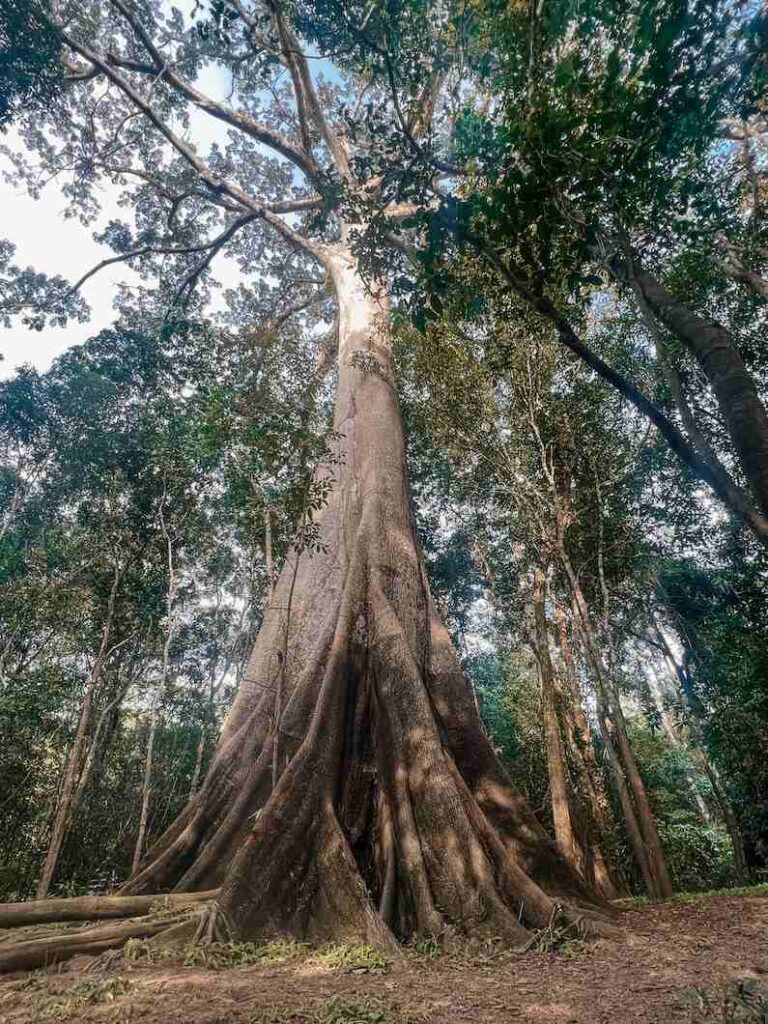
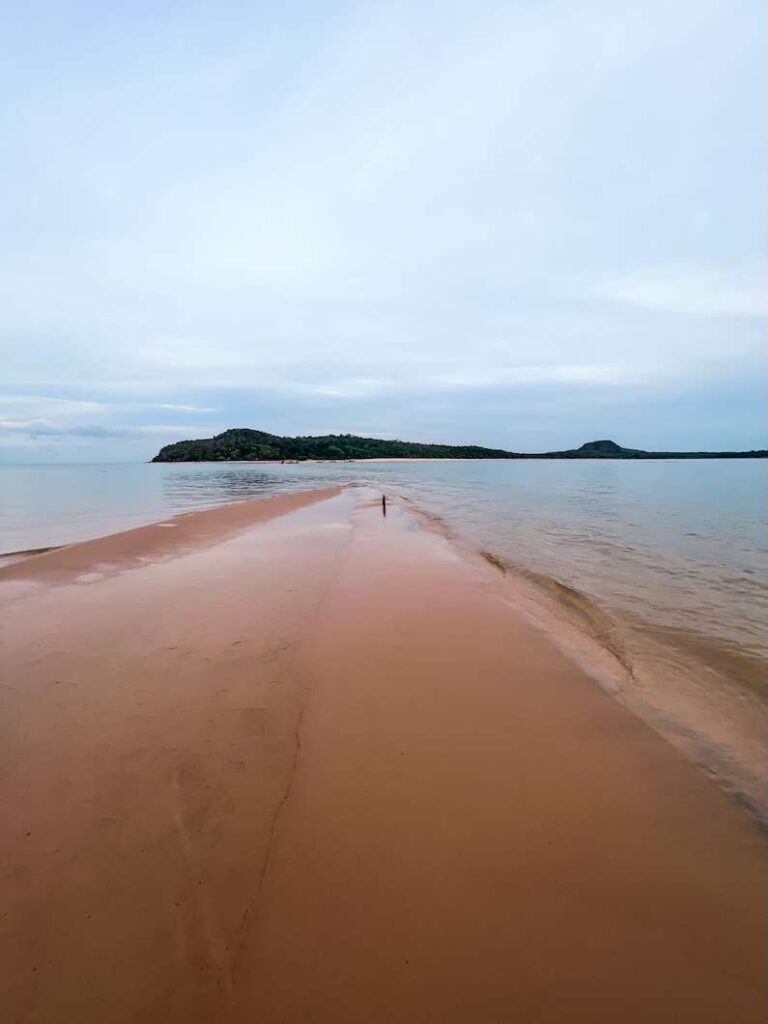
Is there a best month in the Brazilian Amazon?
Our guide at the Dolphin Lodge said August is his favorite month in the Amazon. He explained how the weather is the sunniest, water levels are very high, and animals are more prevalent. It is, however, one of the worst months for mosquitos.
Hotels, excursions, or cruises may have different rates depending on the season. Since June, July, and August are more desirable, the Dolphin Lodge’s rates are a bit higher.
My experience visiting in January was nothing short of fantastic.
Despite being the start of the rainy season, it didn’t rain one time during our two-week stay in the Brazilian Amazon. River levels were noticeably low but having never seen the rivers at their highest, it didn’t take away any beauty in my opinion. We still saw monkeys, sloths, alligators, snakes, and hundreds of dolphins.
The Amazon attracts more than just the passive tourist. Sport fishing (catch and release) for prized fish like the Peacock Bass or Arapaima has a season from July to January depending on the river.
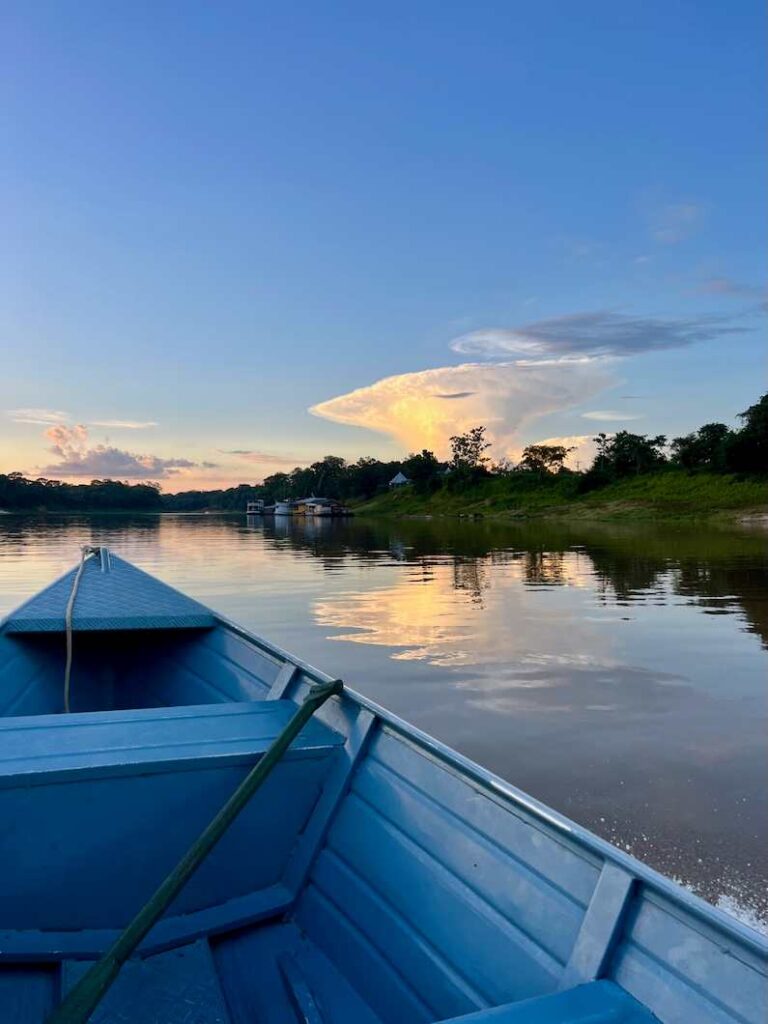
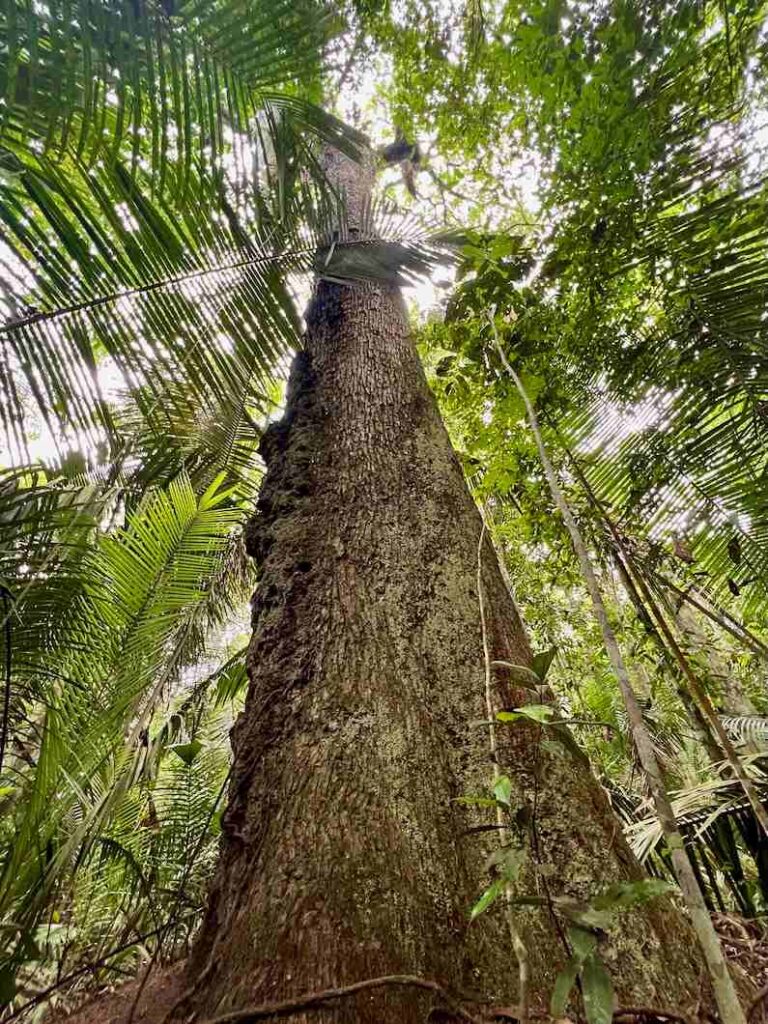
Different ways of visiting the Brazilian Amazon Rainforest
The Amazon Rainforest is spread over eight countries in South America. However, there are only a handful of reliable and worthwhile access points for the average tourist.
The Amazon in Brazil and Peru
Two of the most popular gateways into the Amazon are through the Brazilian city of Manaus and the Peruvian city of Iquitos.
People say the Brazilian Amazon Rainforest is all about the Amazon River while visitors to Iquitos will experience more wildlife.
Having never been to Iquitos, I can’t speak to this claim. However, having spent two weeks in various parts of the Brazilian Amazon, the wildlife is worthwhile as is the Amazon River.
Another, and I would say, a less popular but equally amazing way to experience the Amazon is in the small town of Alter do Chão, Brazil.
Alter do Chão sits on the stunningly clear, ocean-blue Tapajós River. It is easily accessed through the nearby port city of Santarém.
Alter do Chão and the Tapajós River stole my heart when we visited the Amazon. Check out my posts for more information about staying in Alter do Chão and cruising the Tapajós River.
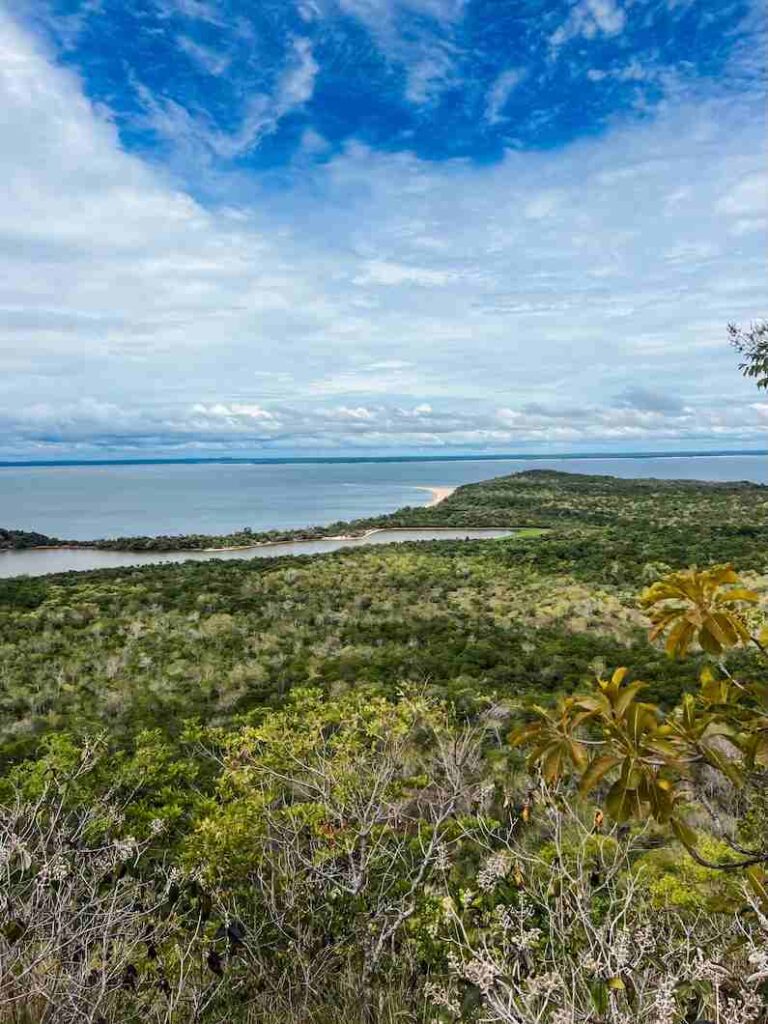
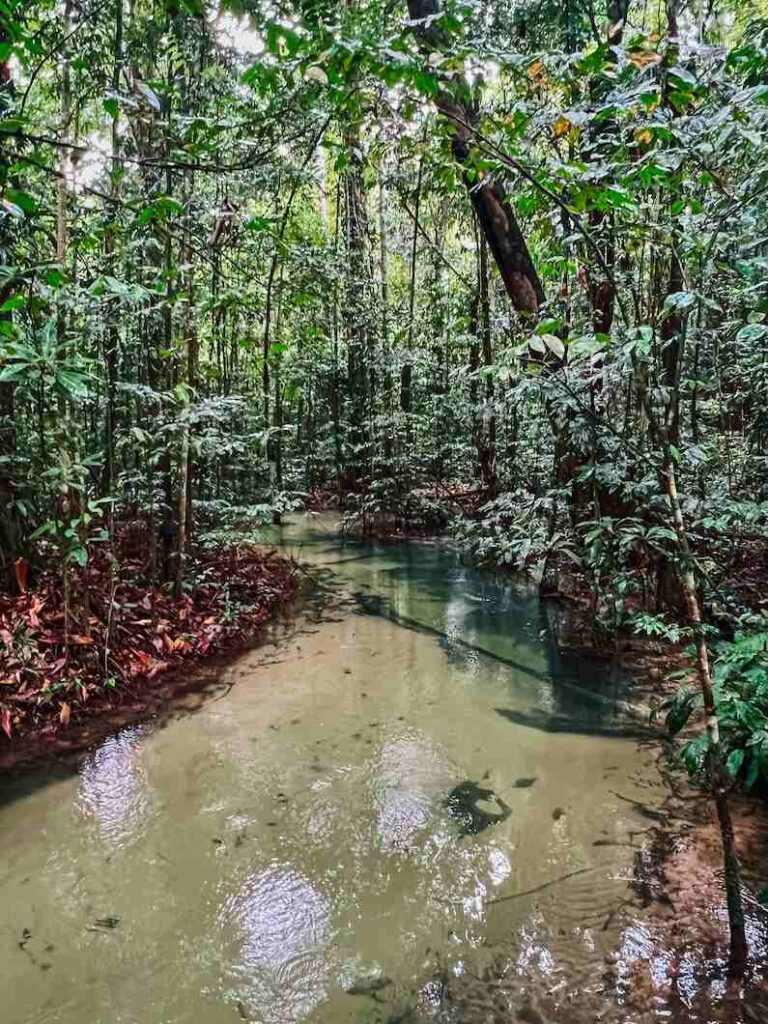
How to visit the Amazon Rainforest
Once you’ve decided where to have your Amazon Rainforest experience, you must determine exactly how you want to visit.
Popular options include:
- Base yourself in a city like Manaus or Alter do Chão and do daily excursions
- Embark on a multi-day river cruise
- Stay at a remote river lodge accessible by only boat
This post will focus on option #3 – a 4-day stay at the remote Dolphin Lodge on the Moramí River.
Dolphin Lodge in the Brazilian Amazon
The Dolphin Lodge is the perfect hotel for visitors wanting to spend quality time in the rainforest and learn about its history, biodiversity, and local culture without breaking the bank.
The name “Dolphin Lodge” couldn’t suit the hotel better.
At any given time half a dozen dolphins (gray and pink) can be seen swimming and playing in the Moramí River in front of the lodge’s property.
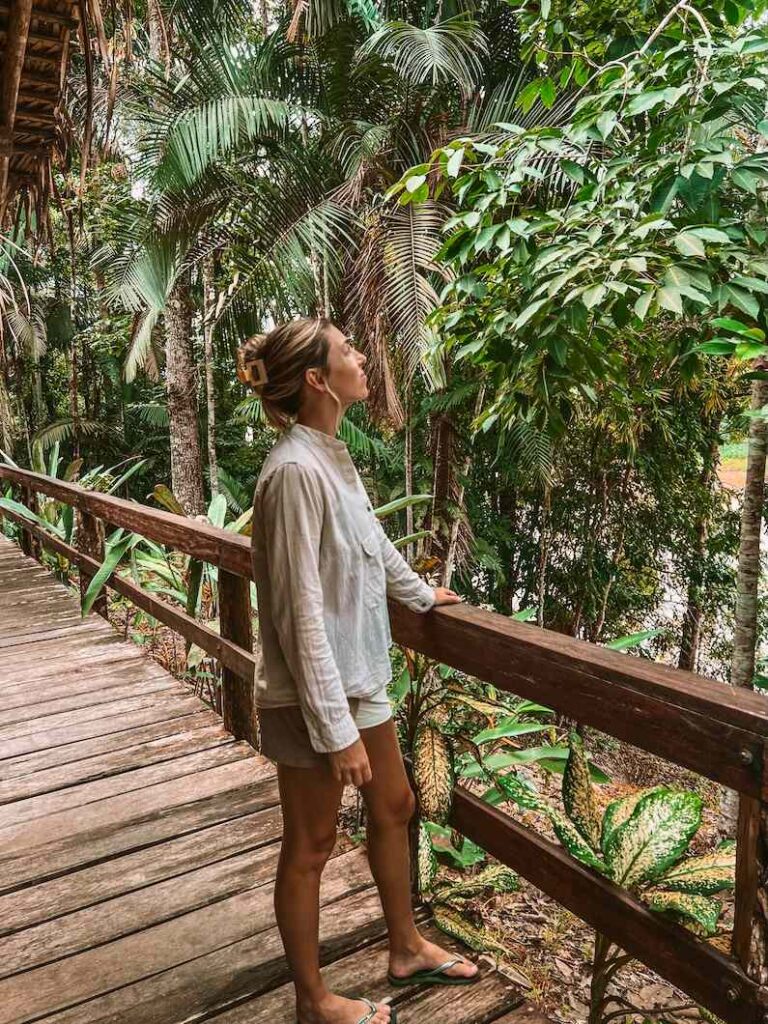
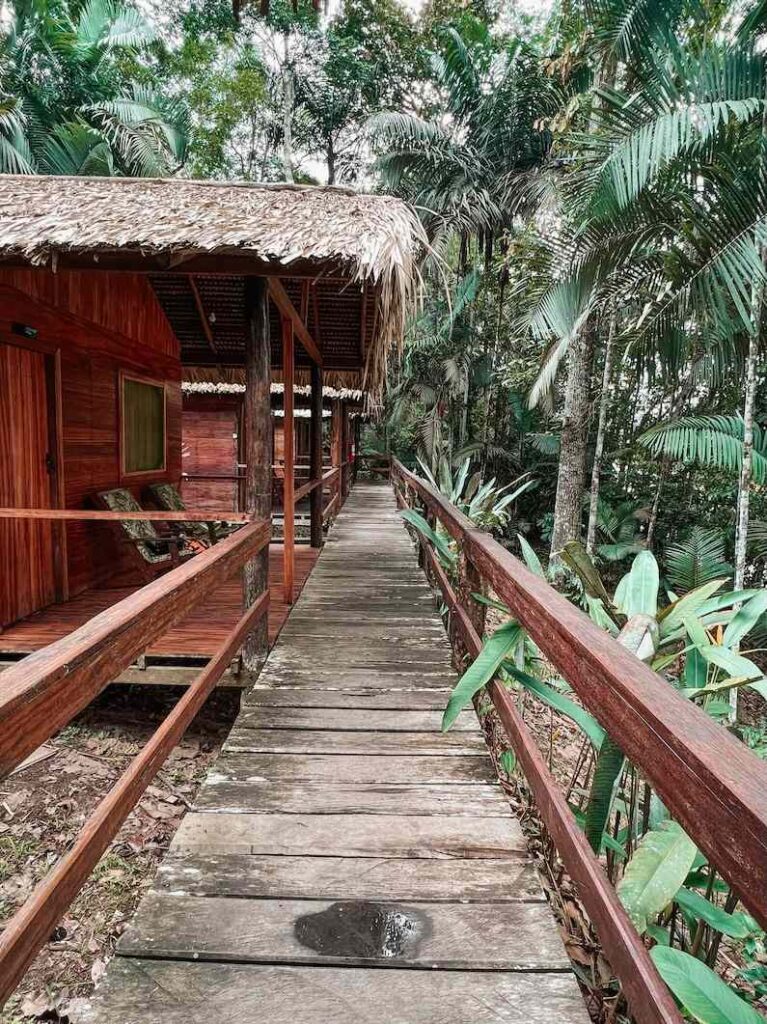
The Dolphin Lodge describes itself as a “rustic and eco-friendly hotel.”
Guests feel they are staying in an isolated area of the Amazon Rainforest but can access modern services like wifi, delicious hot meals, refreshing caipirinhas and cold beer, and comfortable beds.
The lodge has fantastic value.
While it isn’t the fanciest in the Amazon, the package rates are affordable considering the quality of amenities, meals, and structured tours.
Location and Arrival to Dolphin Lodge in the Brazilian Amazon
The Dolphin Lodge is in the municipality of Careiro which is 78 Km from Manuas. It is accessed via the Moramí River.
The adventure begins for guests while traveling from Manaus to the Dolphin Lodge.
Transit time is around 3 hours and involves a car ride from Manaus to the Ceasa Port, a boat ride crossing the Negro River, another car ride, and finally a boat ride on the Moramí River to the lodge.
Despite being 3 hours, the travel time goes quickly as there is a lot of nature to take in during the journey.
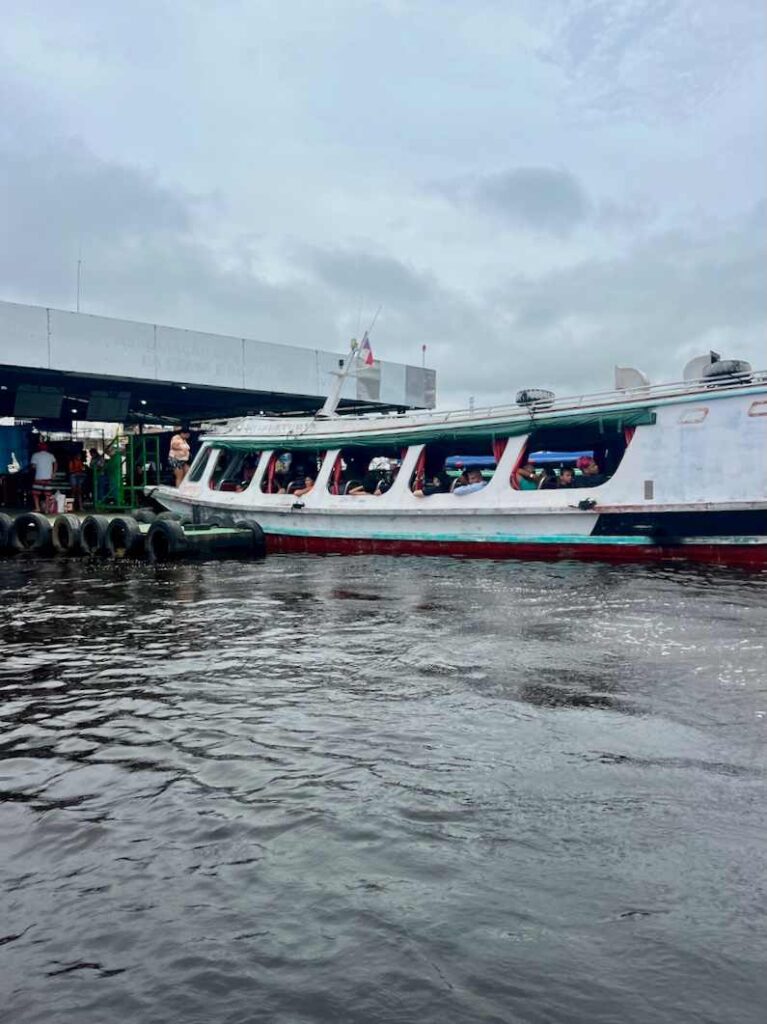
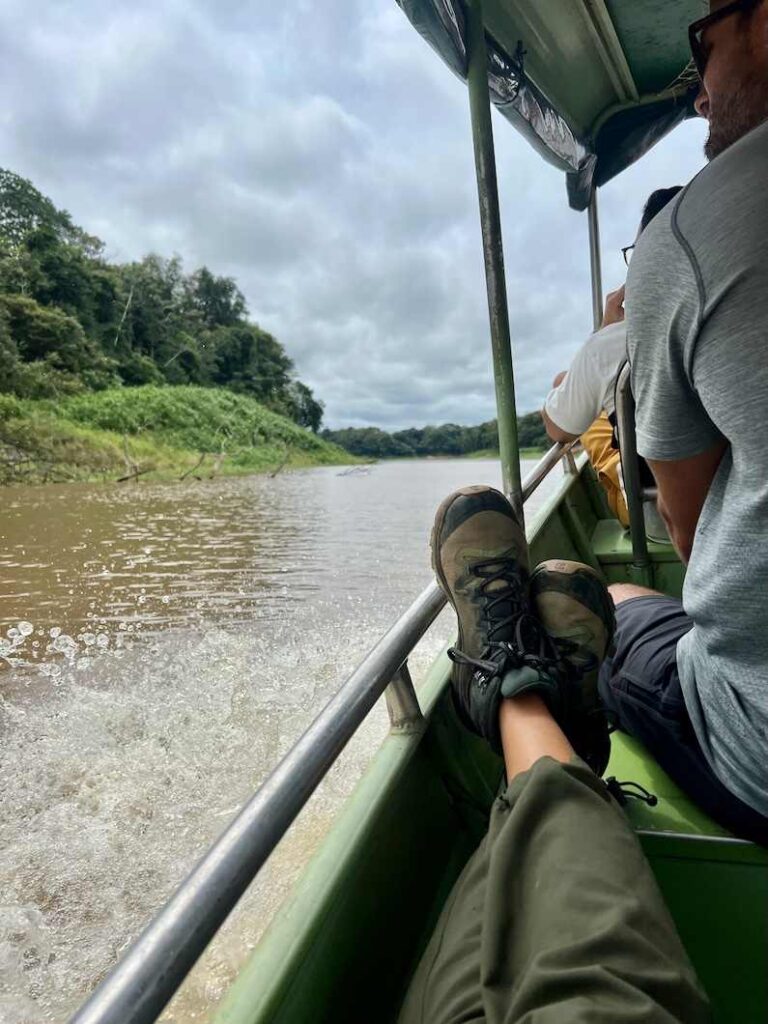
During the Negro River crossing, guests have the chance to see the famous Encountro das Águas or the “Meeting of Waters” where the Solimoẽs River meets the Negro River.
About the Meeting of Waters
A phenomenon where the murky, sediment-filled Solimões River flowing from the Andes Mountains refuses to mix with the Rio Negro’s blackwater arriving from Colombia for several miles near Manaus.
The contrast, caused by differences in temperature, speed, and sediments, between the rivers is so stark it is visible from outer space.
Eventually, the two rivers merge into one and form the famous Amazon River.
Further down the Amazon River, towards the Atlantic Ocean, there is another Meeting of the Waters. Near the city of Santarém, Brazil the bright blue Tapajós River clashes with the muddy Amazon River for several miles.
The other highlight of the Negro River crossing was our first sighting of the Tucuxi Dolphins. These are not the pink Amazon River Dolphins, although we saw many of these prehistoric-looking creatures during our stay too.
The grey-colored Tucuxi dolphin is similar to the bottlenose dolphin but differs in that they are much smaller and have a differently shaped dorsal fin. They are known to travel in groups and put on shows jumping in and out of the rivers.
At the time, I couldn’t understand why the boat captain didn’t linger longer to let us watch for more dolphins in the Negro River.
However, after 4 days and hundreds of Tucuxi dolphin sightings later, I now understand how common it is to see them in the rivers outside of Manaus and Alter do Chão.
More information about the transit from Manaus to Dolphin Lodge
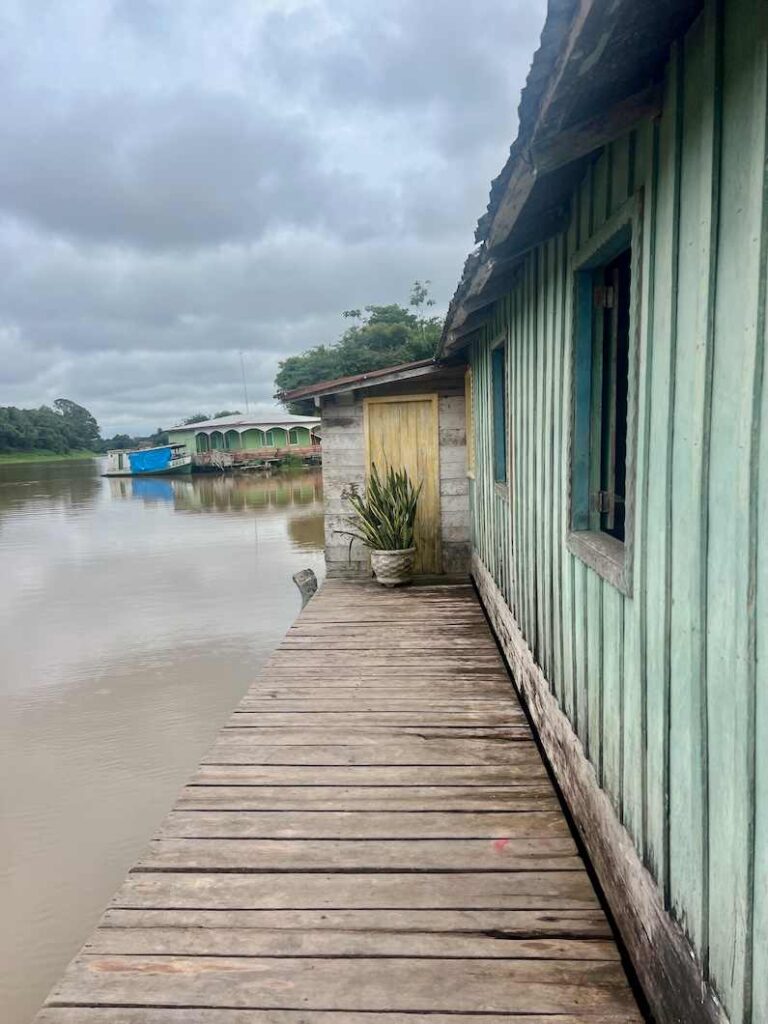
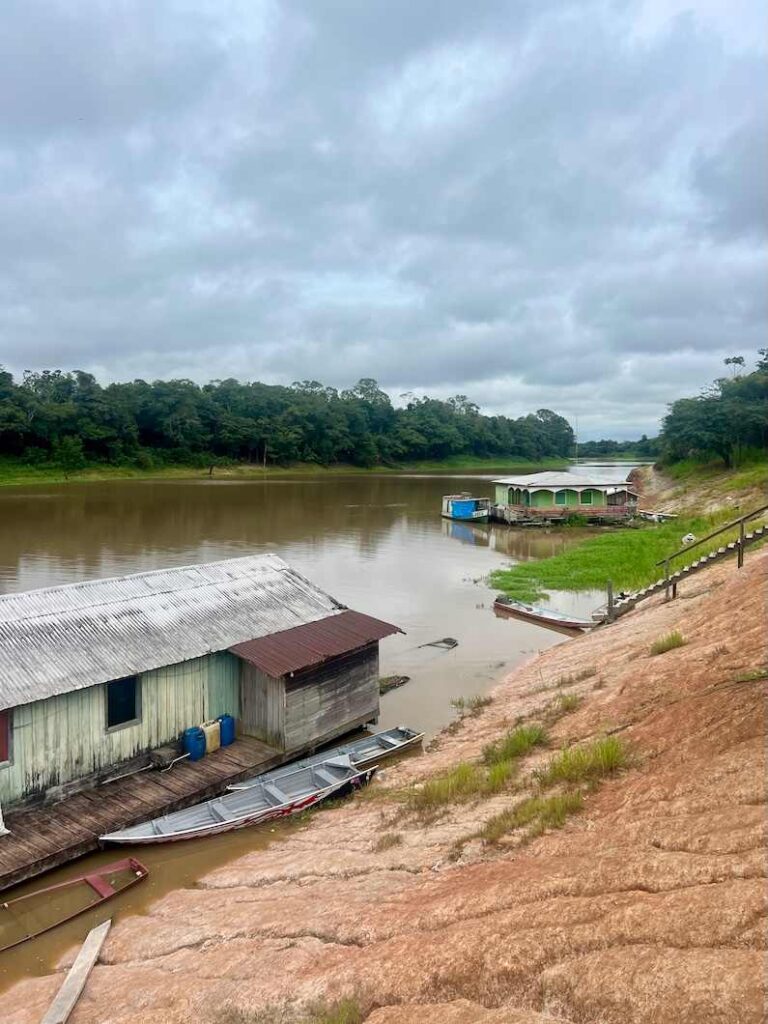
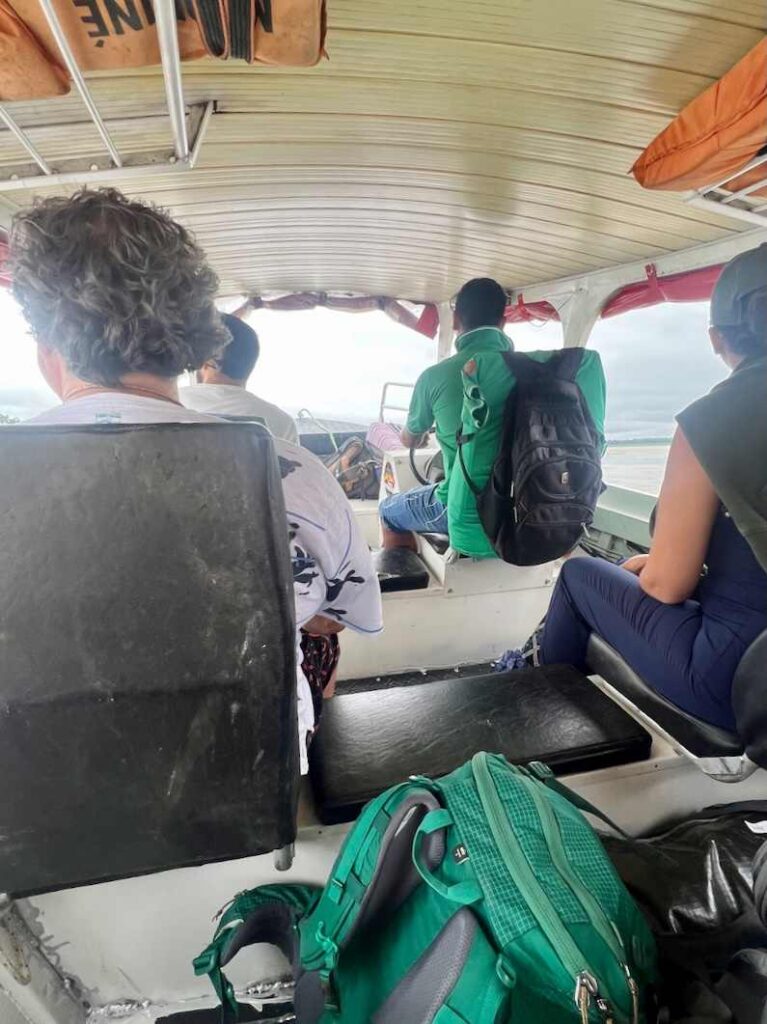
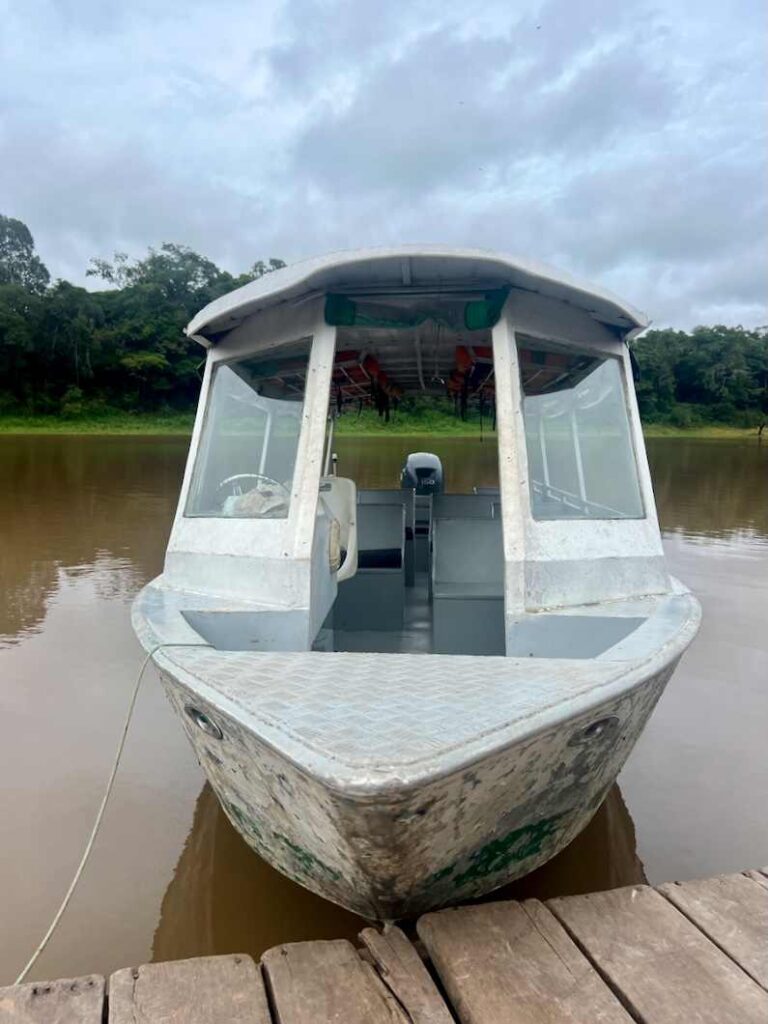
The Dolphin Lodge asks that guests only bring the essentials and limit their luggage to 10kg. This is to help with the weight of the boats.
We did our best to comply with this rule but no guest luggage was weighed or turned away.
Some water can get in the boats so be cautious of your belongings being on the ground and the type of shoes you wear.
Before our last boat ride, we stopped at a floating convenience store to use the restroom and buy a snack. Of course, there were more dolphin sightings here too.
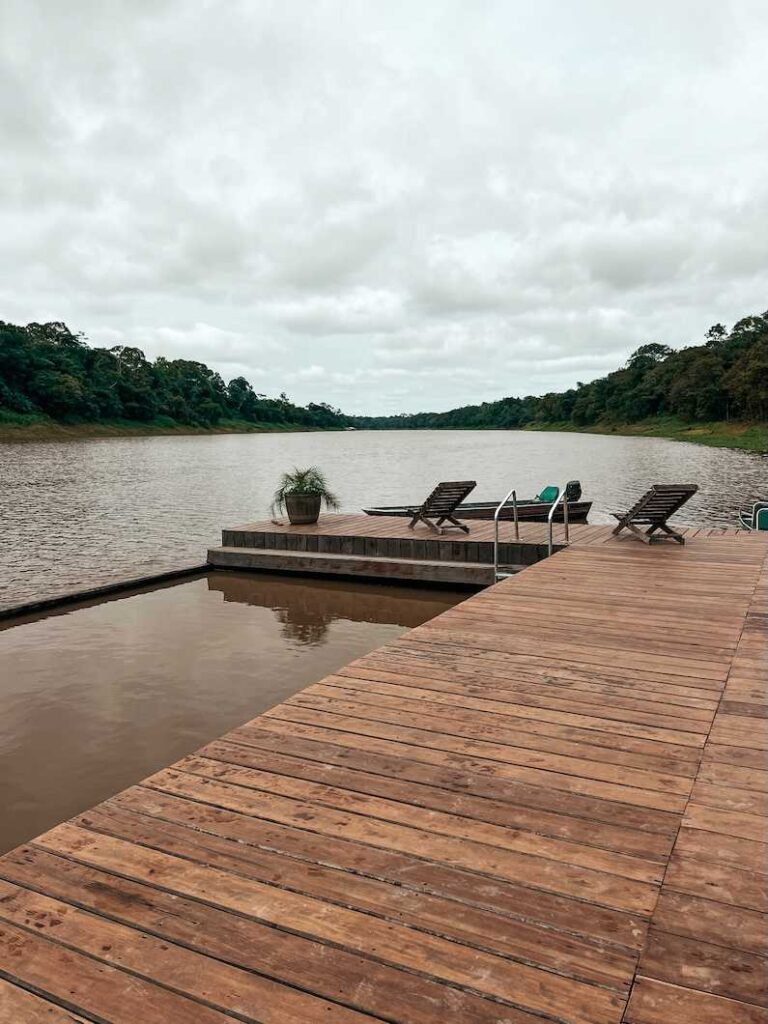
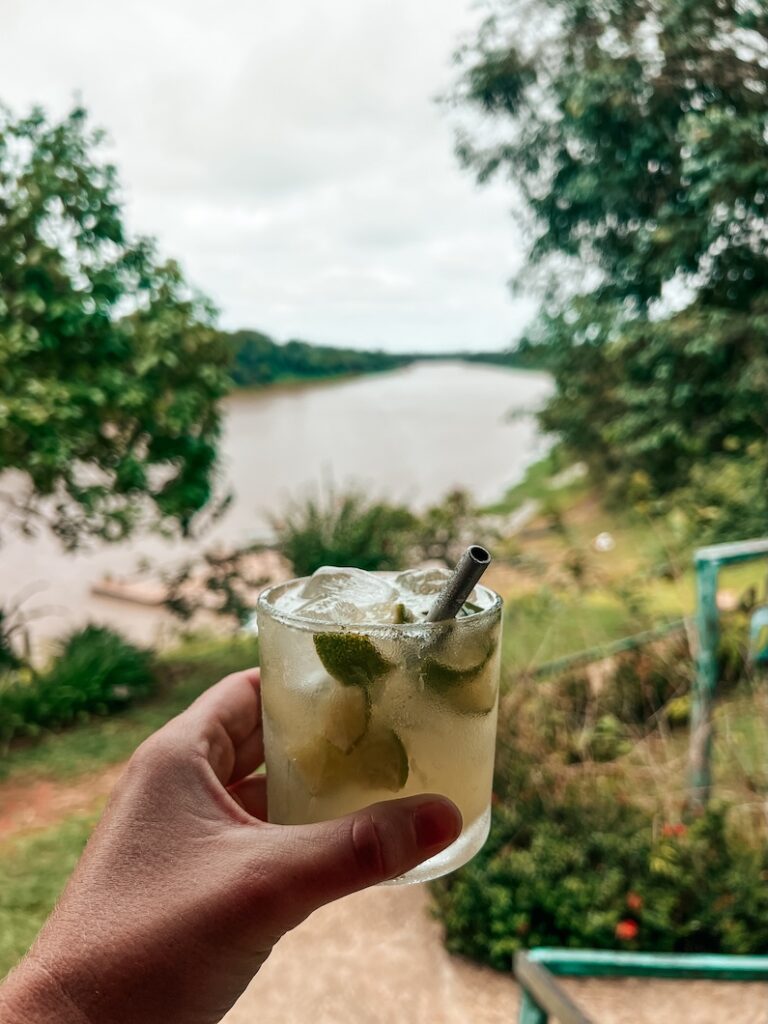
Cruising down the Moramí River, our first glimpses of the lodge were the floating deck and enticing freshwater pool.
Depending on the time of year, the dock and pool may be just a short walk from the main reception area (as shown on the Dolphin Lodge homepage) or over 40 feet away and down a slopping hill.
All guests are greeted with a traditional caipirinha cocktail (cachaça and lime) and shown their rooms. Our arrival time was around 11 am, lunch was served at noon, and the first tour began at 3 pm.
Accomdations at the Dolphin Lodge in the Brazilian Amazon
The Dolphin Lodge has 10 guest rooms and 2 covered common areas.
The main common area is the reception room where meals and drinks are served. It is screened-in with a roof made of over 5,000 palm fronds.
The smaller, second common area is the hammock lounge. Perfect for the inevitable post-lunch nap.
Uncovered areas include the floating deck and pool and a few benches in the grass in front of the reception. Guests also have a small sitting area before the entrance to their bungalow or chalé.
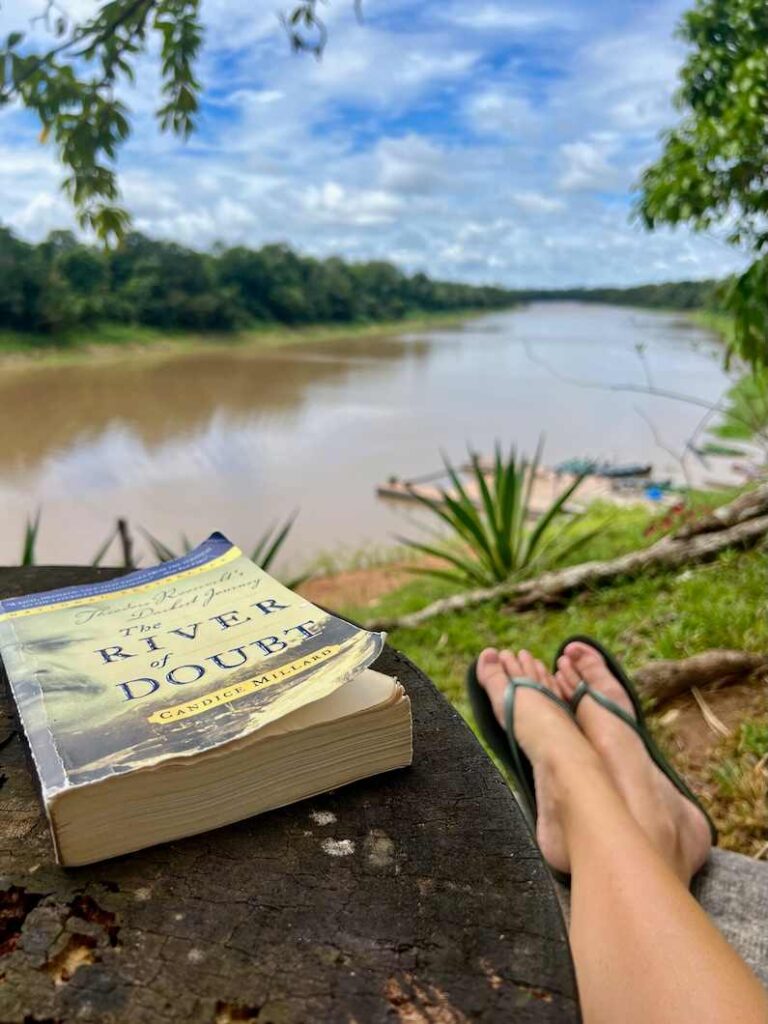
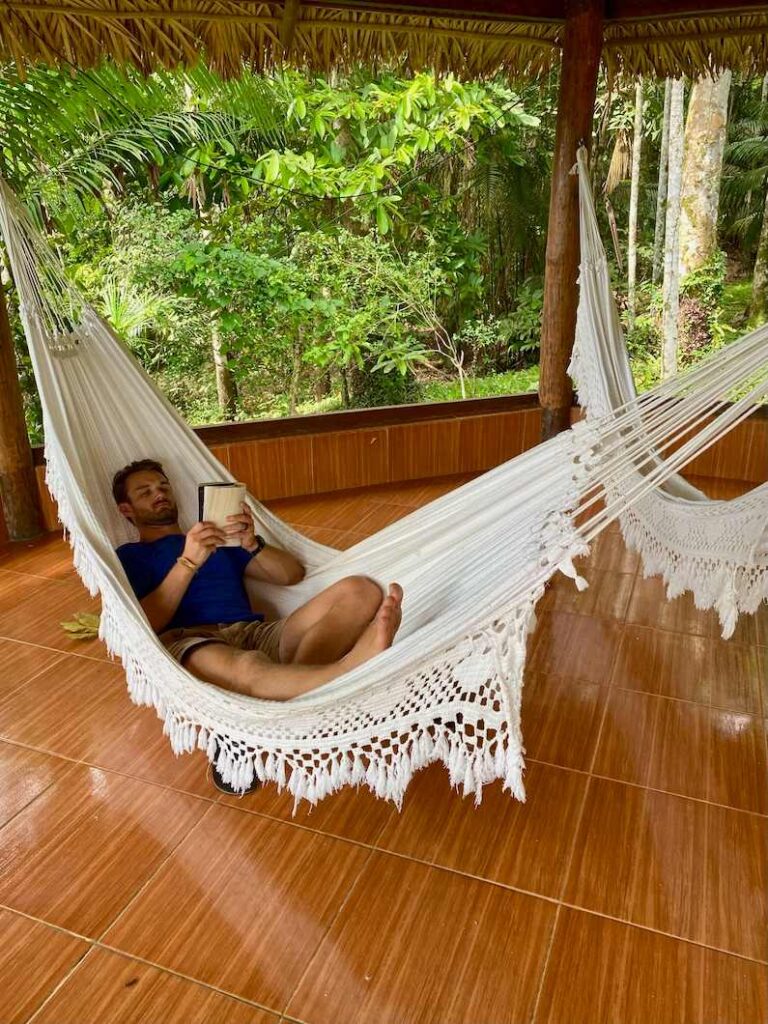
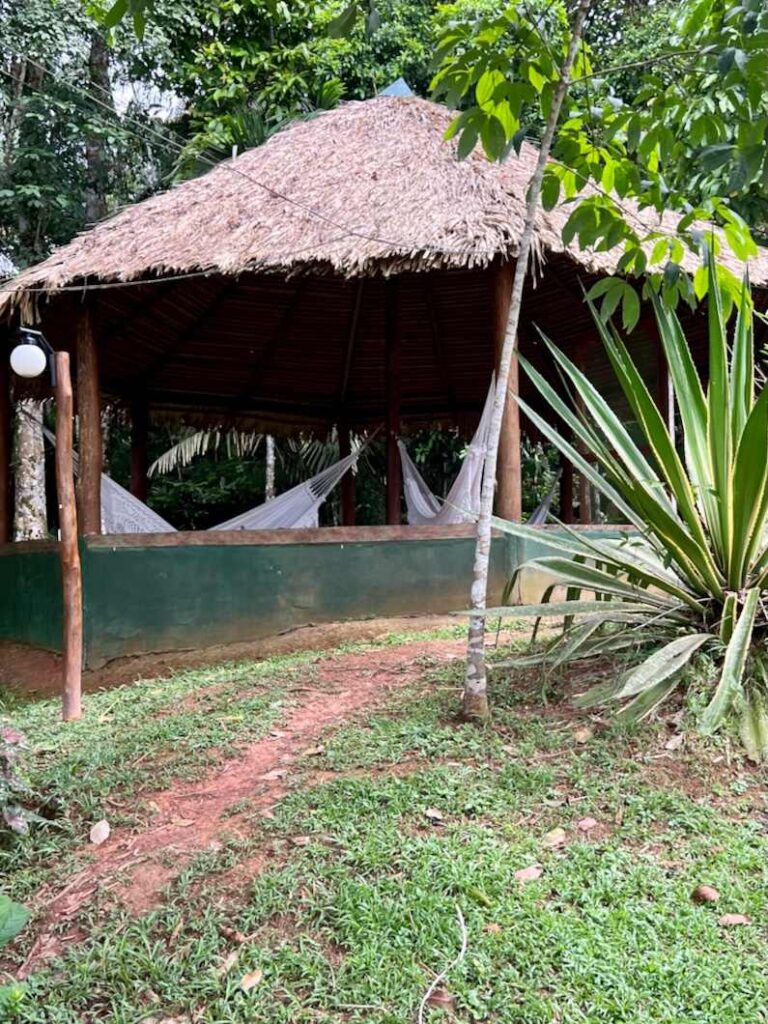
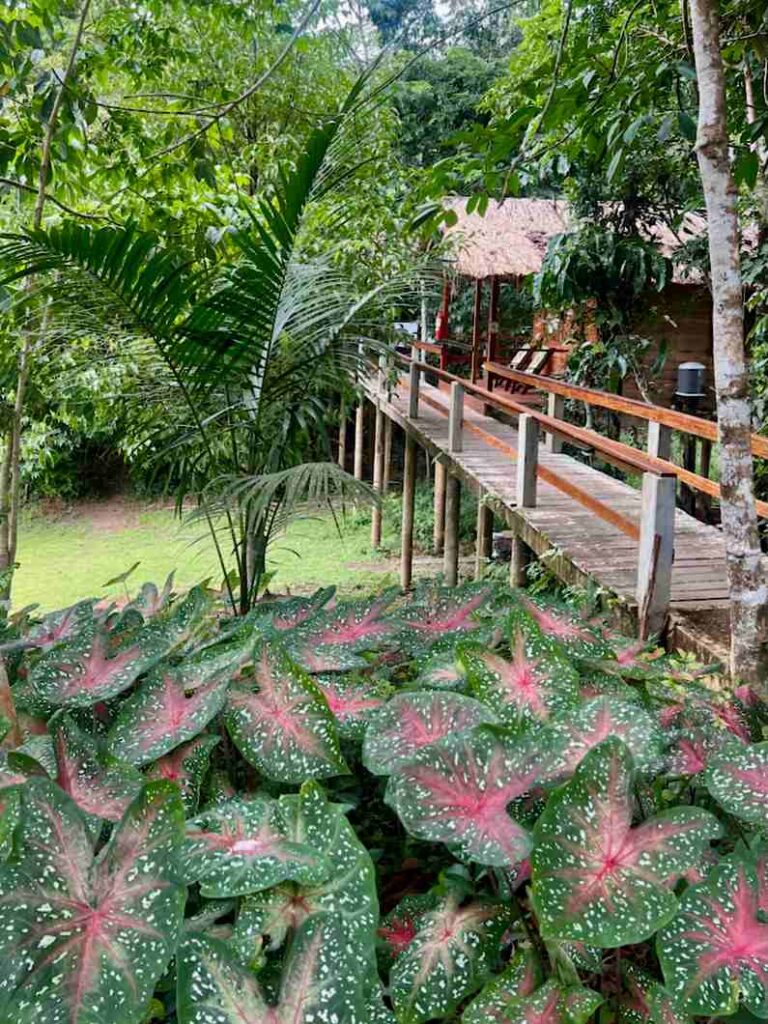
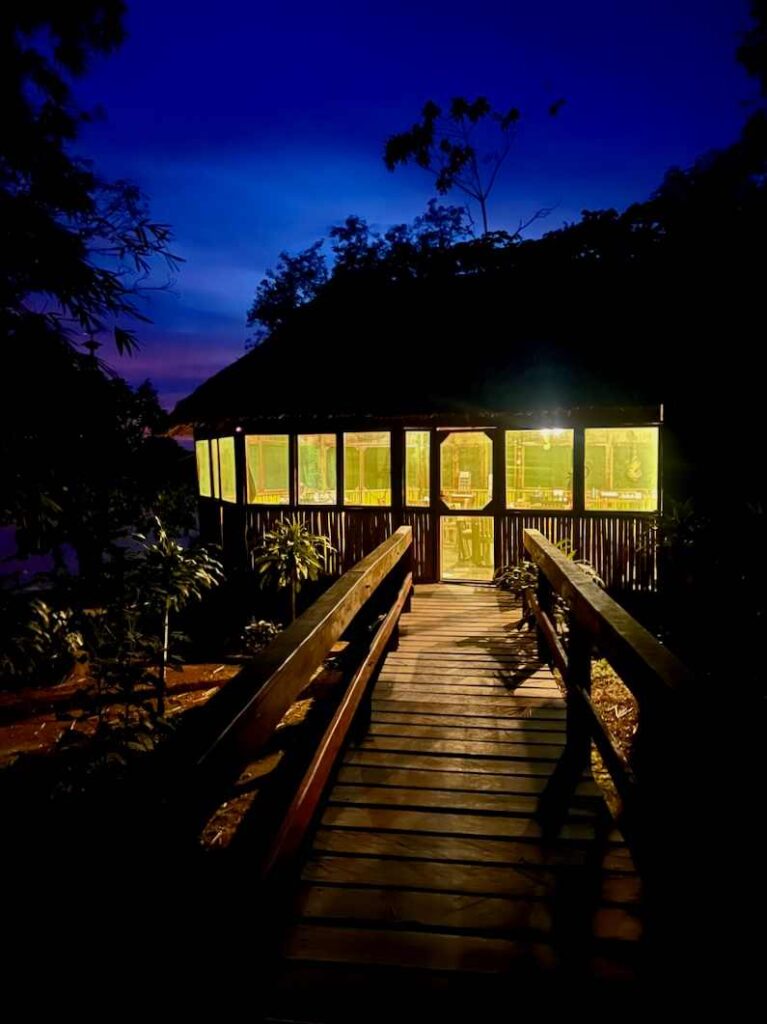
At max capacity, the lodge can accommodate 30 guests. Its small size feels quaint and guests get to know each other during meals or tours.
At booking, guests choose between a chalé or a bungalow. The Dolphin Lodge website clearly states that the bungalows only have water underneath them between April and August.
If visiting during the low water season (September through March) try to snag one of the Chalés as they are a slightly better room during this time.
The rooms have mosquito nets over the beds. Mosquitos weren’t very prevalent during our stay in January but we did have a few other friendly bug visitors to the room, so I was thankful for the piece of mind the netting provides at night.
The bathrooms are simple and there is no hot water. This is common at most remote Amazon hotels.
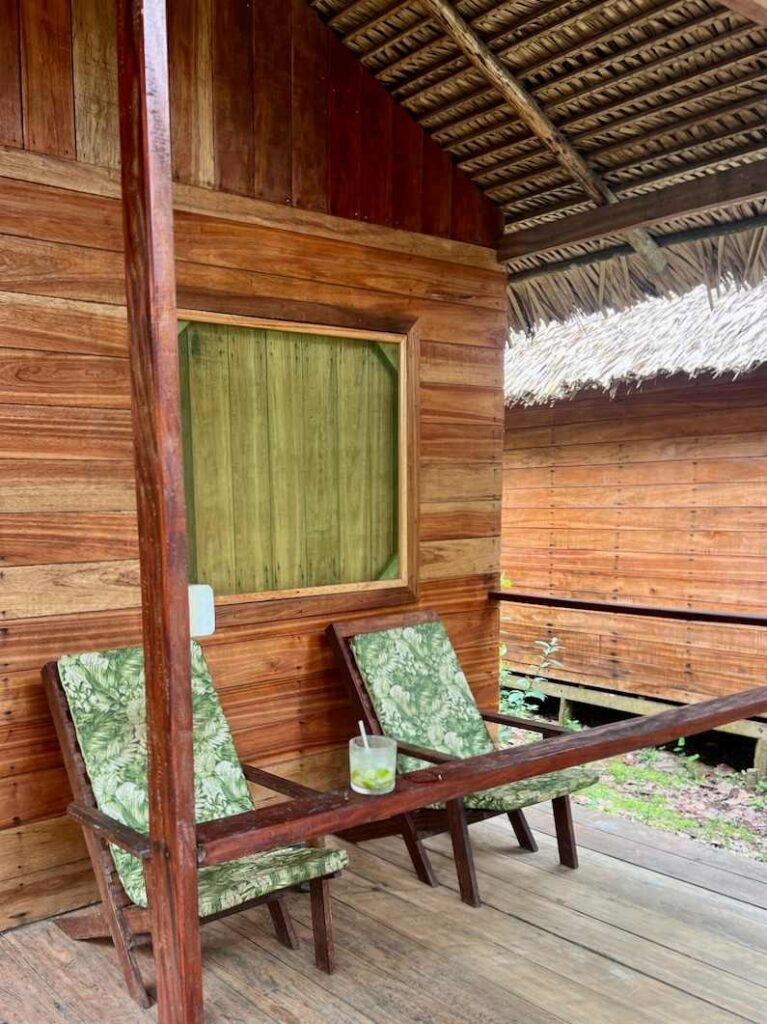
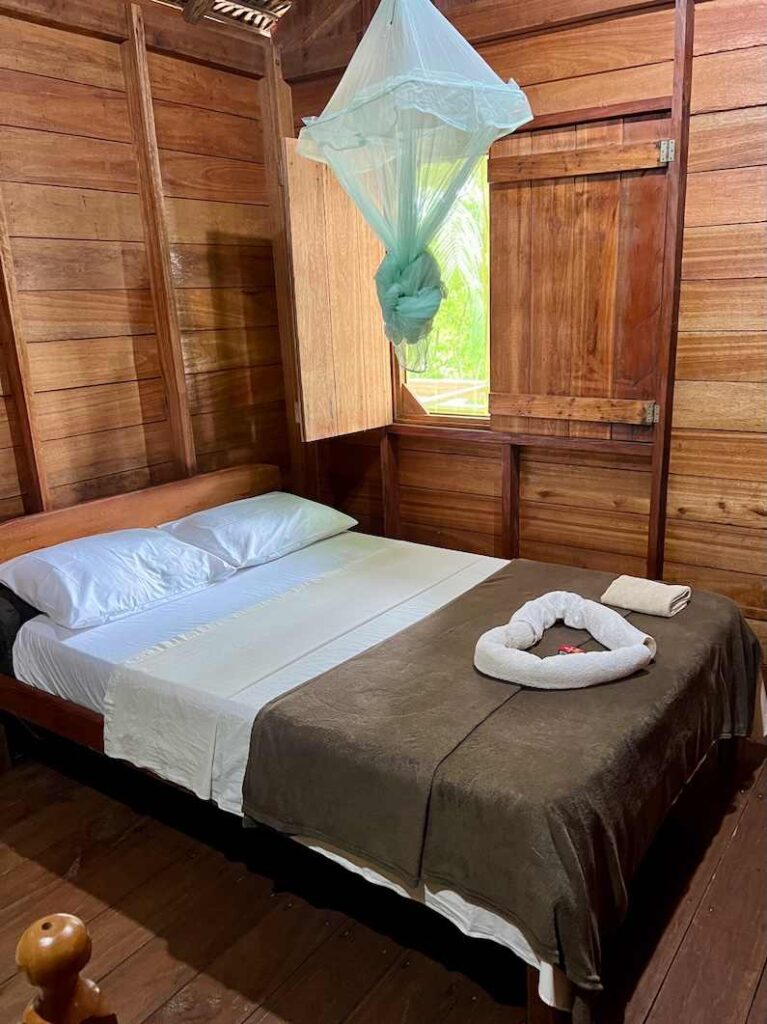
Daily Excursions from the Dolphin Lodge into the Amazon
The Dolphin Lodge does a wonderful job organizing the daily excursions and activities.
There is always a morning (8 am to 11:30 am) and afternoon (3 pm to 6 pm) excursion.
What each excursion entails depends on the package you buy. The package you buy depends on the number of nights you stay at the Dolphin Lodge.
Packages at the Dolphin Lodge
The nightly packages range from 1 night to 4 nights. For guests wanting to stay more nights, Dolphin Lodges offers “Survival” packages that go up to 9 nights. But for the average guest, 2 to 4 nights is plenty.
The Dolphin Lodge provides specific details about the guided excursions included in each package in easy-to-read PDFs on their website.
The excursions might not be offered in the same order listed in the package PDF. The lodge organizes the order based on the rotation of the guests and the language the tour is being given in.
For example, your last excursion might be another guest’s first-day excursion. The Dolphin Lodge has guides that are able to converse in English, Spanish, and Portuguese.
The guided excursions, almost all via boat, are intimate with only 8 guests plus 1-2 guides per tour. The most we ever had in our boat was 5 guests.
View all Dolphin Lodge packages
In my opinion, a one-night stay (Seringueira Package) at the Dolphin Lodge is not worth it. If your time is that limited, it would be better to stay at a lodge closer to Manaus.
We stayed for 3 nights as part of the Tucunaré Package. I believe this is the optimal length of stay at the Dolphin Lodge.
The only excursion that I felt was unnecessary or silly was the Piranha fishing. The piranhas are very, very small and you fish with just string and stick. It isn’t that exciting for adults. I’m sure kids find it much more entertaining. Luckily this was our first outing so it was nice spending time on the river after traveling all morning.
With the 4-night package (Cigana), guests have the option of spending a night away from the Dolphin Lodge. Guests set up camp in the jungle, eat over an open fire and sleep in a hammock.
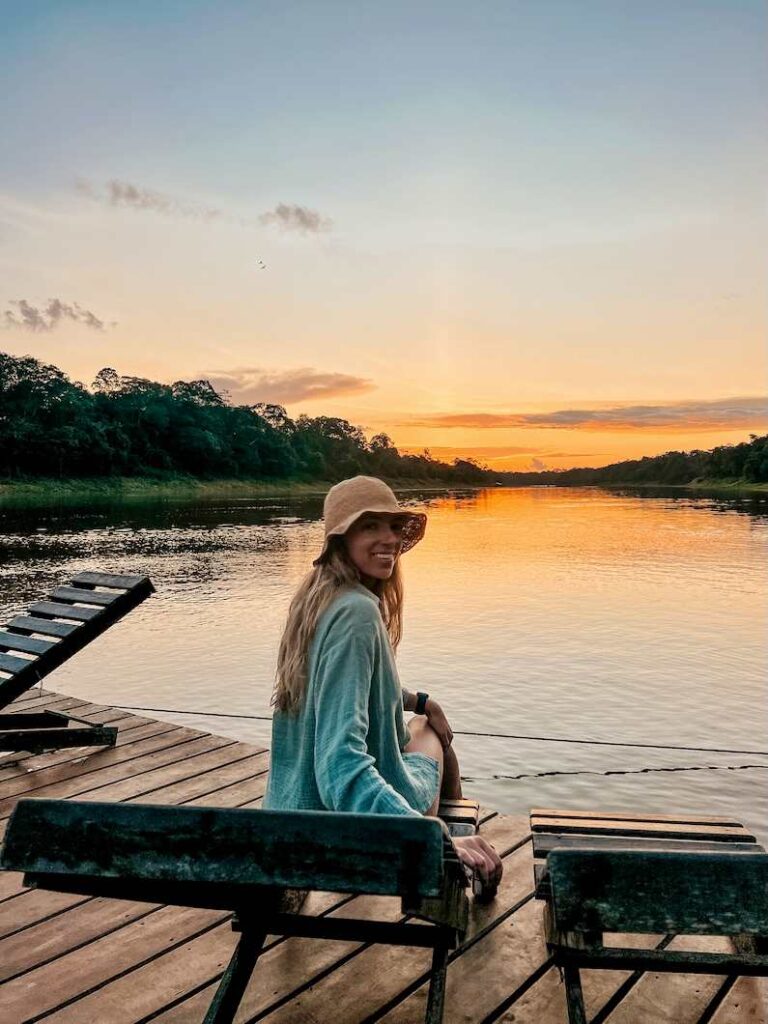
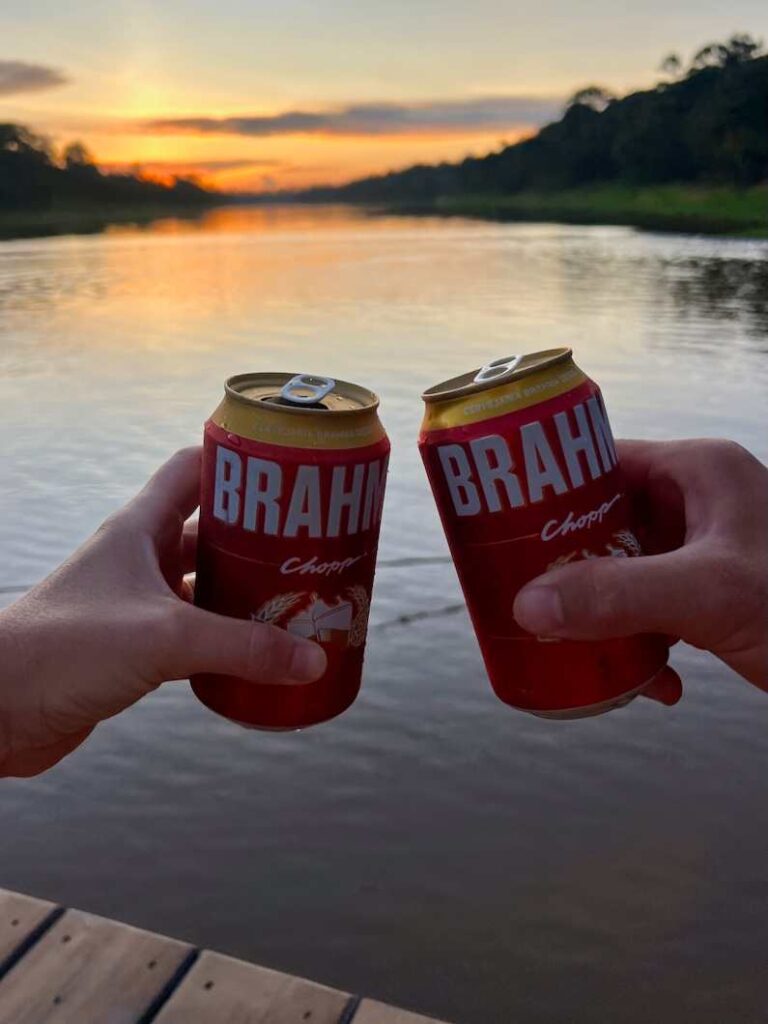
Guided Excursion Highlights in the Tucunaré Package (3 nights) into the Brazilian Amazon
During our stay, we participated in at least 12 guided excursions. Some are definitely more memorable than others, but I learned so much during each one. I’ve listed my favorite tours with photos below.
1. Jungle Hike
The Jungle hike is very informative. It starts with a quick boat ride to the beginning of a trail, and then we slowly made our way back to the Dolhpin Lodge on foot.
During the 2 hour walk, our guide was constantly pointing out plants and trees that have been used by Indigenous and Cabolocs people for centuries.
What looks very unassuming to tourists could be used to treat illnesses, aid in construction, serve as tools and weapons, or have nutritional value.
We learned everything has a purpose in the jungle and many locals trust what they find in nature more than what can be found in a pharmacy.
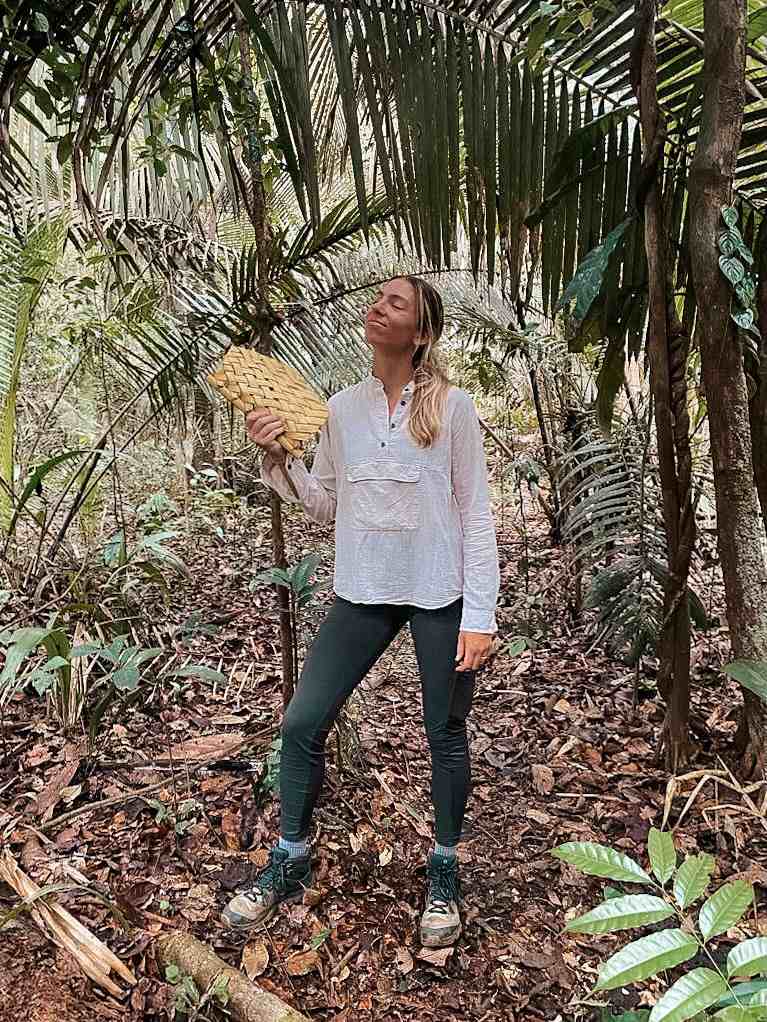
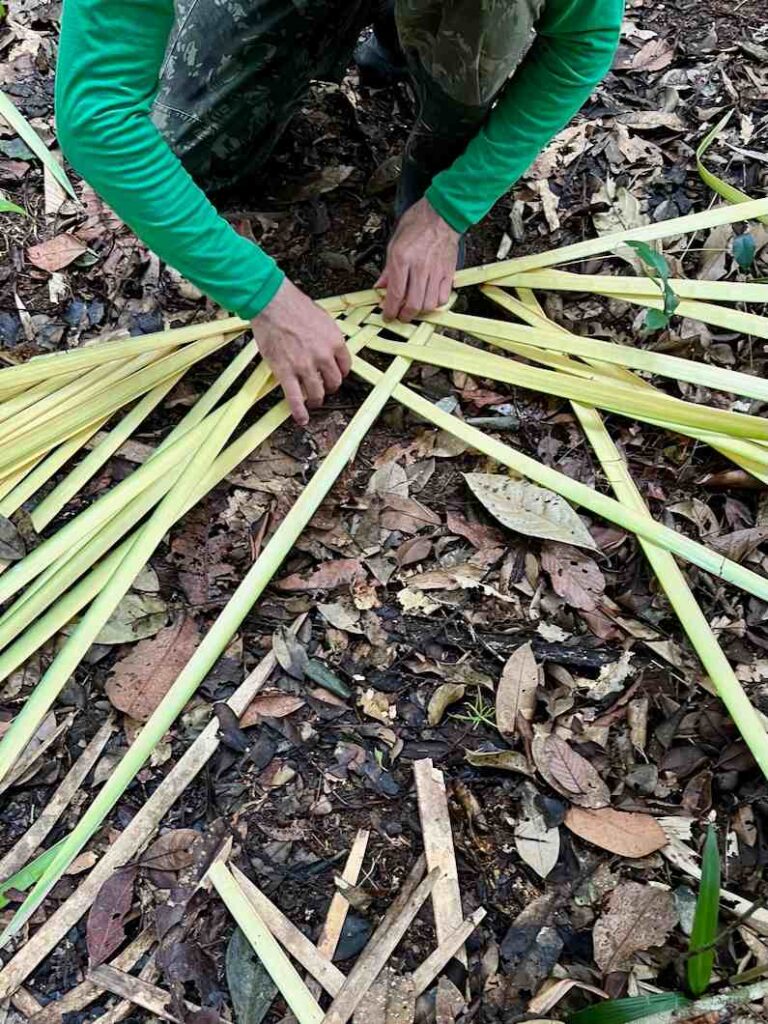
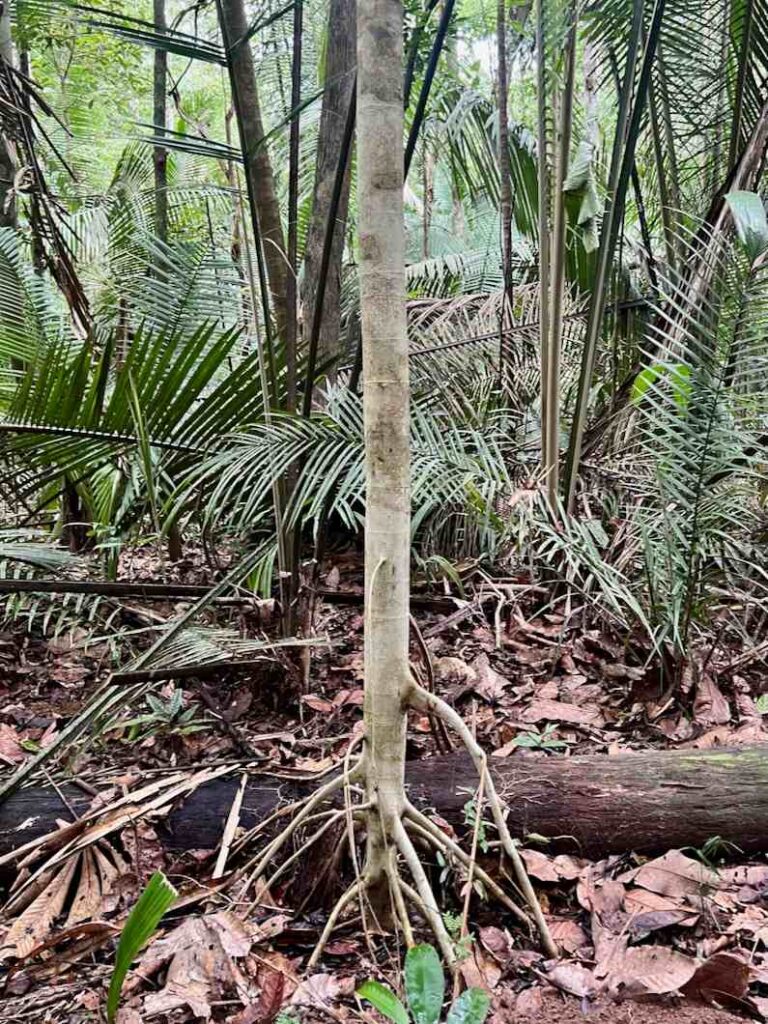
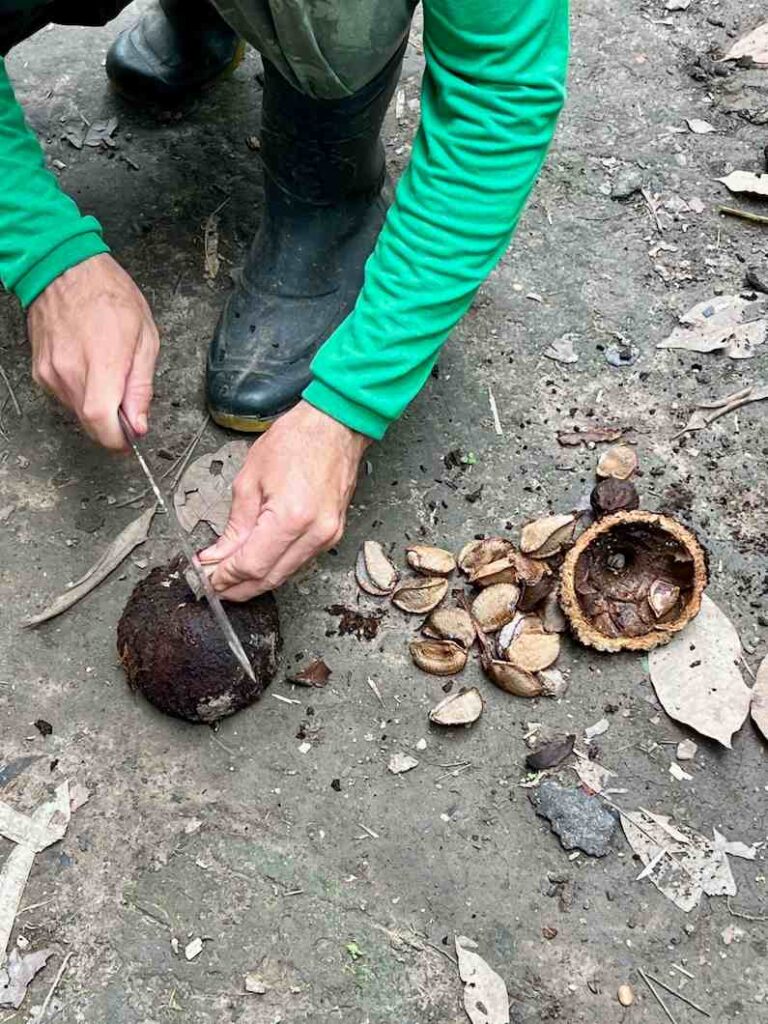
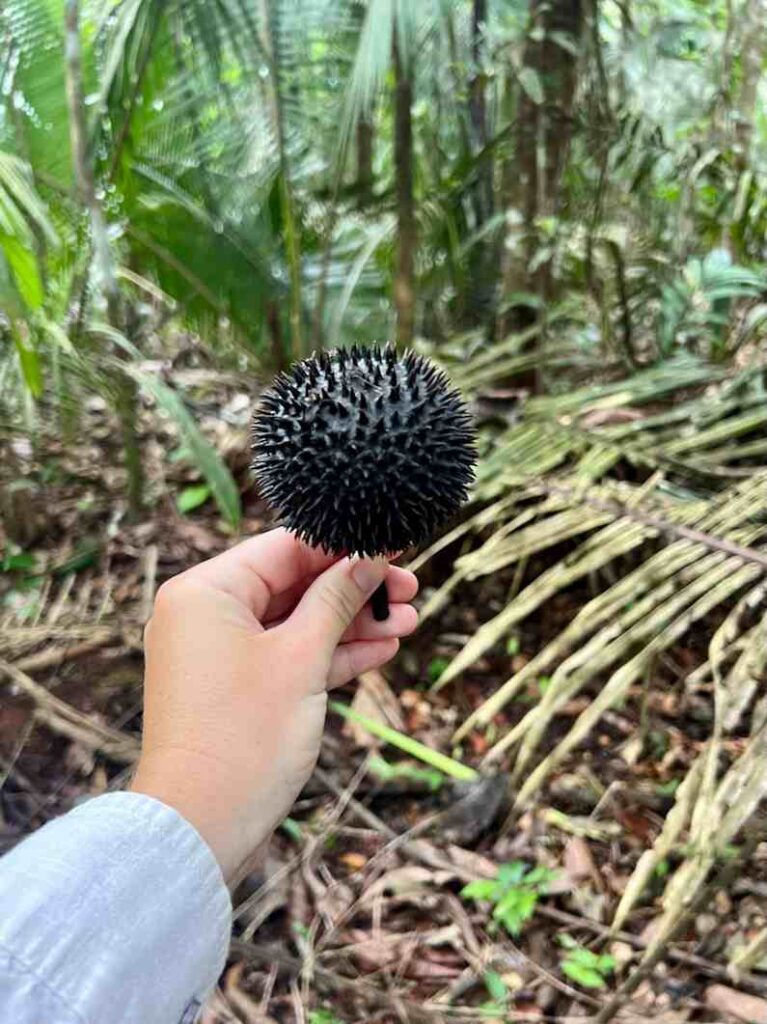
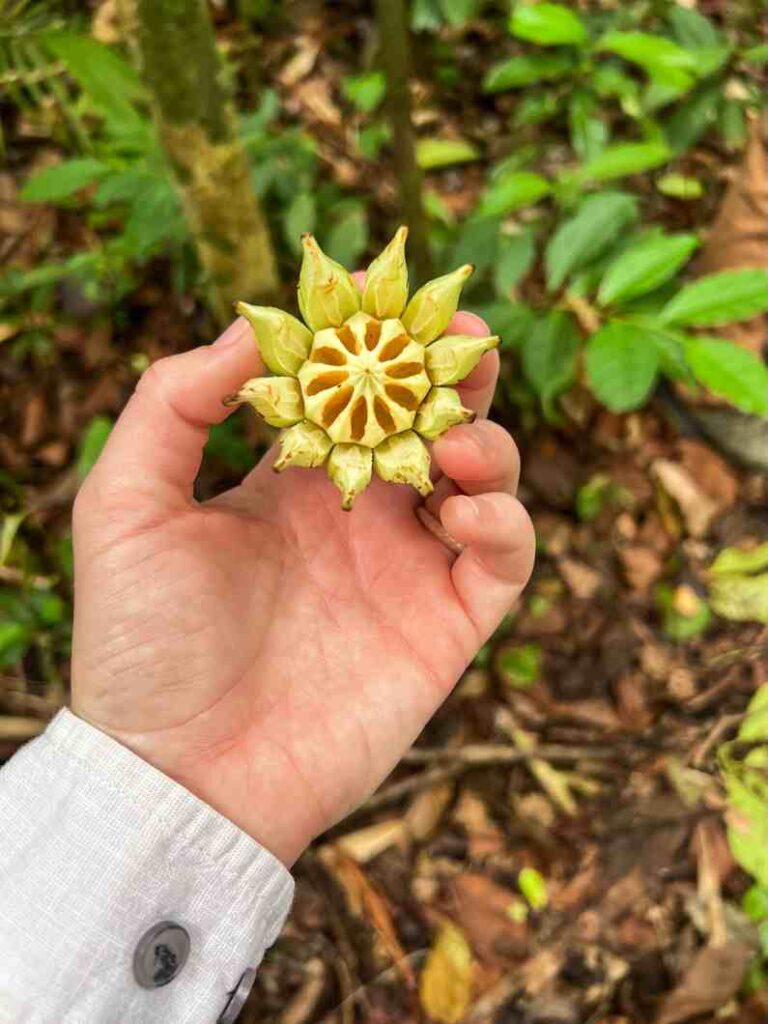
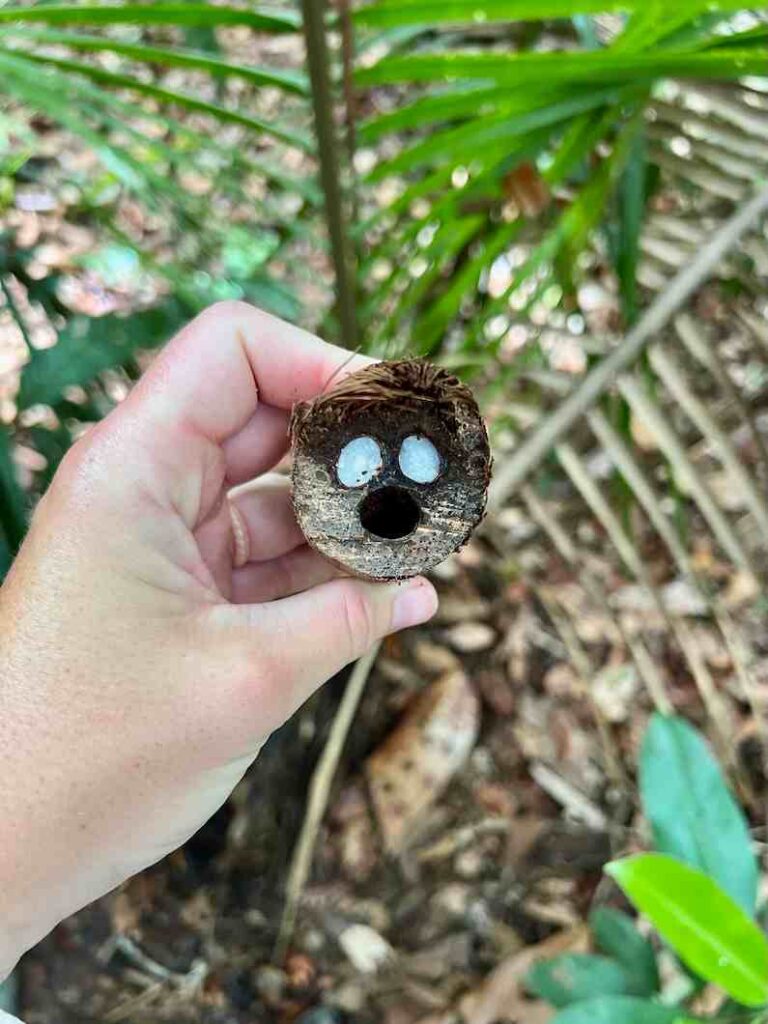
2. Seringa Rubber House
In the 19th and 20th centuries, the Brazilian Amazon rainforest and its people were exploited for the extraction of latex from the native rubber tree known as the Seringueira in Portuguese.
The process of extracting the latex from the tree is known as Rubber Tapping.
During this excursion, the guide shows how the tree’s bark is specifically sliced to draw the latex out into a bucket. The latex is not usable right away and must be exposed to air for several hours until it starts to congeal. After that, fire can be used to reheat the latex and mold it into a shape.
If you’re wanting to learn more about the rubber industry in the Amazon, check out Greg Grandin’s book – Fordlandia: The Rise and Fall of Henry Ford’s Forgotten Jungle City.
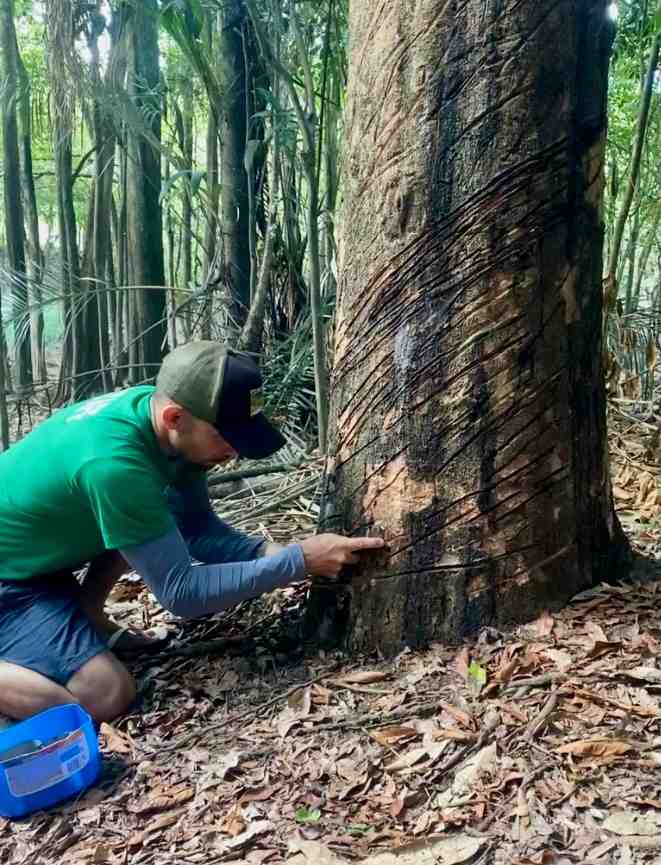
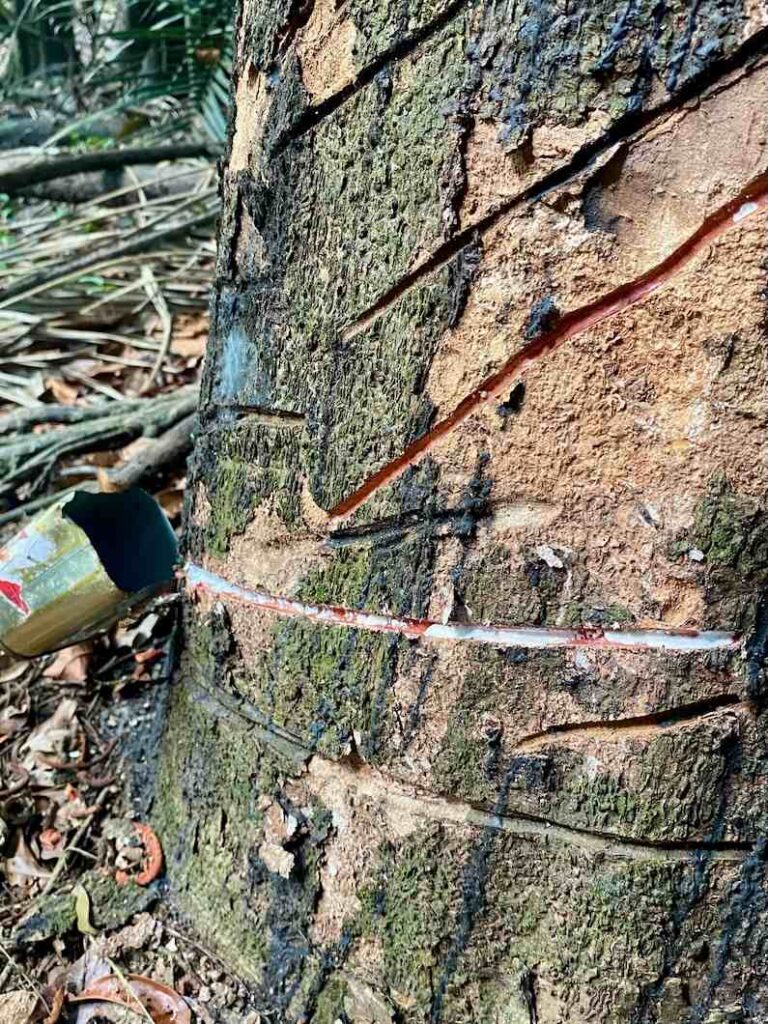
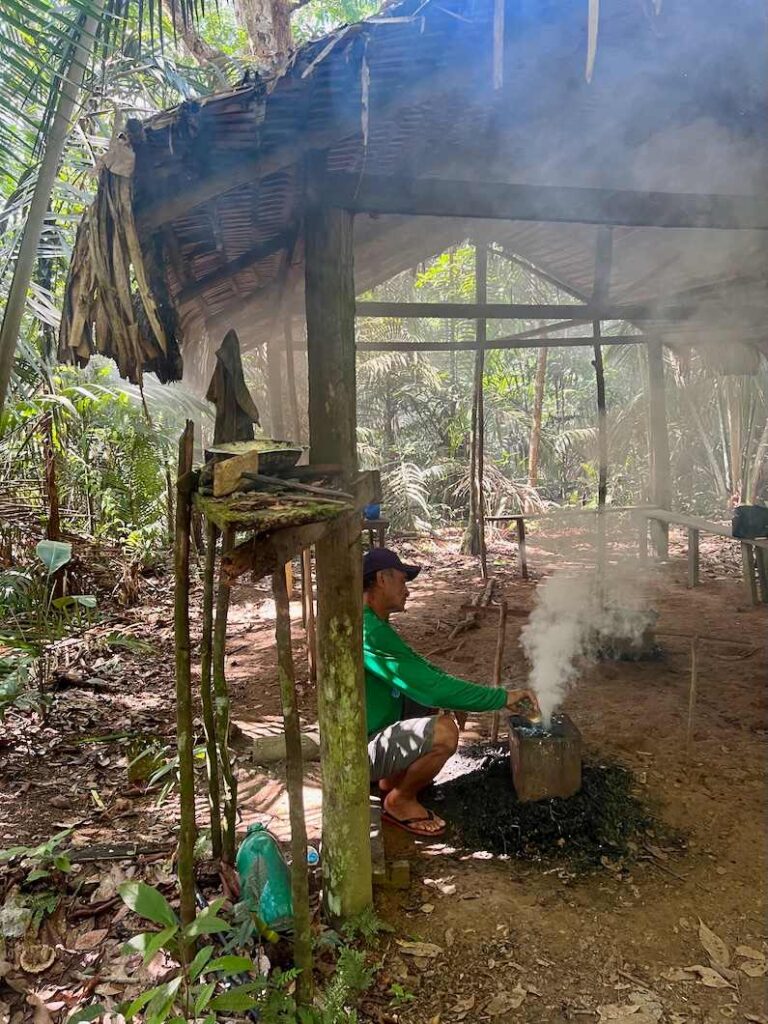
3. Boat Ride to Kapok Tree
The Kapok tree also called the Samaúma tree is a behemoth in the Amazon.
It grows 200 feet, soaring above the rainforest canopy, and its trunk’s diameter can be up to 10 feet wide. Seeing these trees up close, was one of my favorite experiences in the amazon.
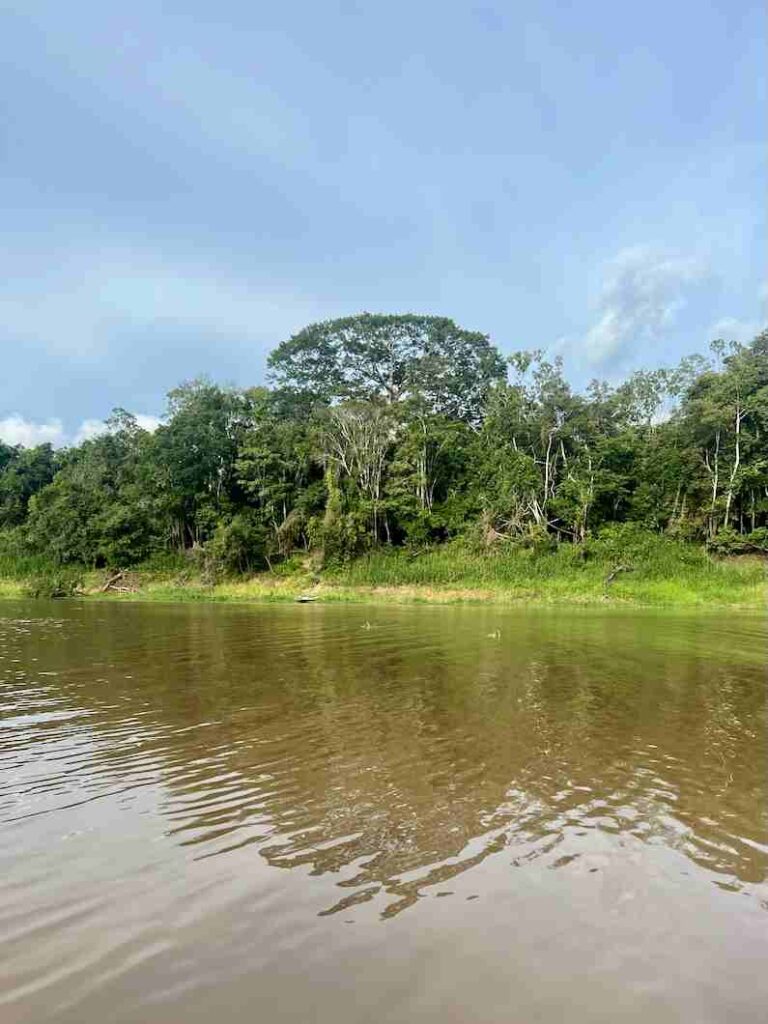
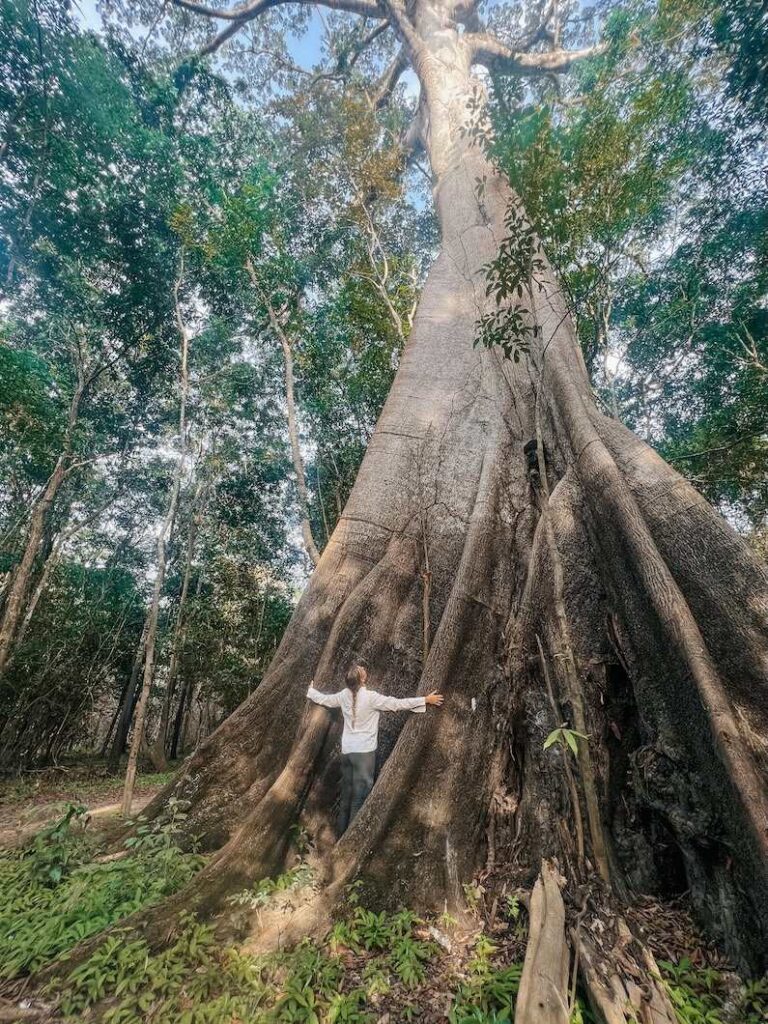
4. Sunrise Boat Cruise
We enjoyed so many peaceful boat rides along the Moramí River but our sunrise boat ride was extra special.
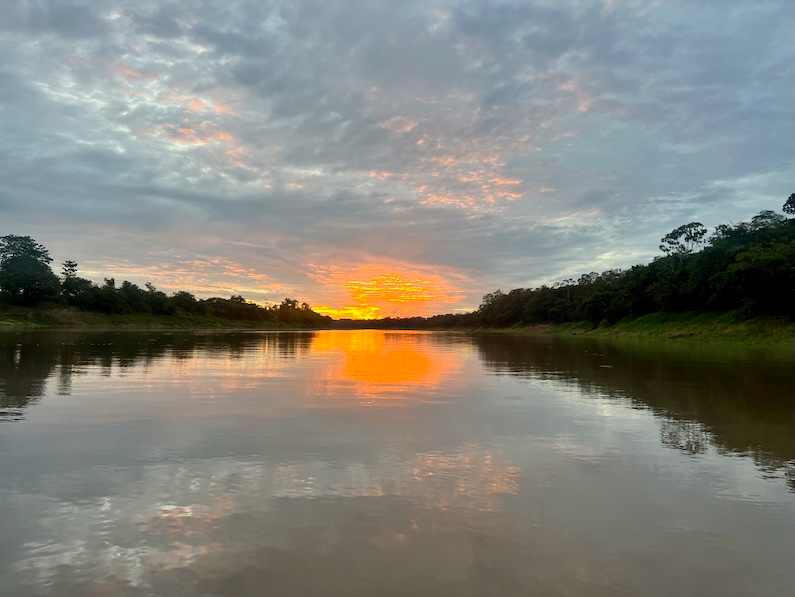
5. Swimming in Juma Lake
Swimming in the rivers of the Amazon? Doesn’t sound very safe given all the Jacarés (alligators), piranhas, and snakes we had seen since our arrival.
But our guides took us to a special lake, about an hour from the lodge, called Juma Lake. They reassured us that the risk of a predatory animal being in the middle of the lake, at its deepest spot, was unlikely and therefore safe to swim.
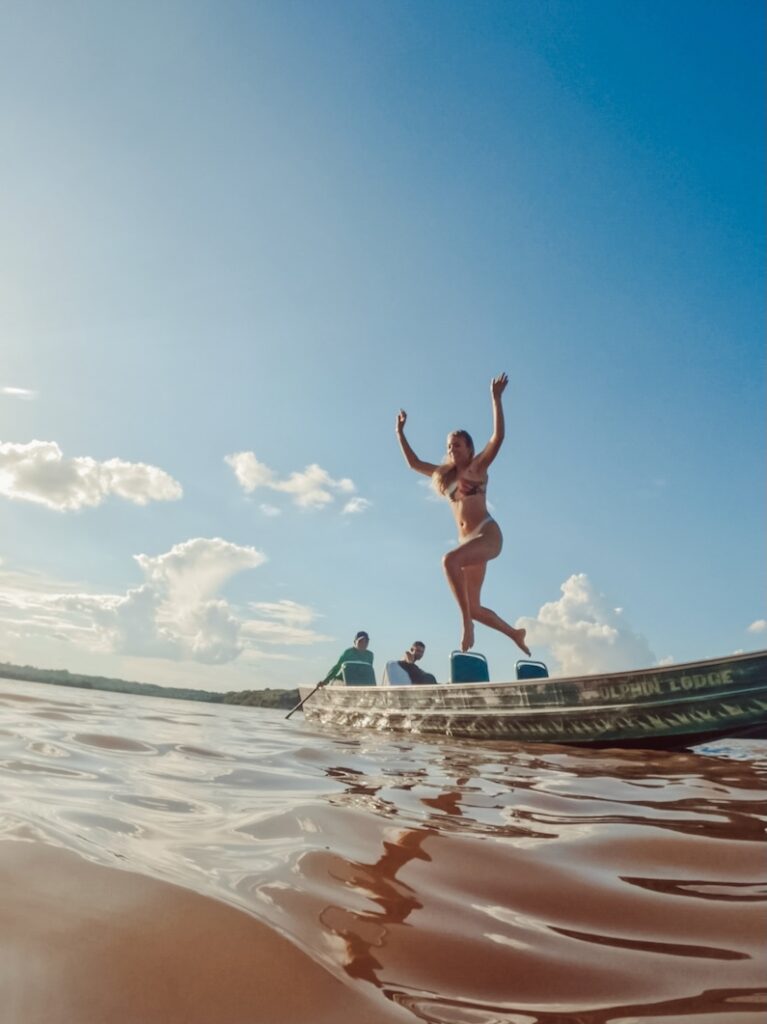
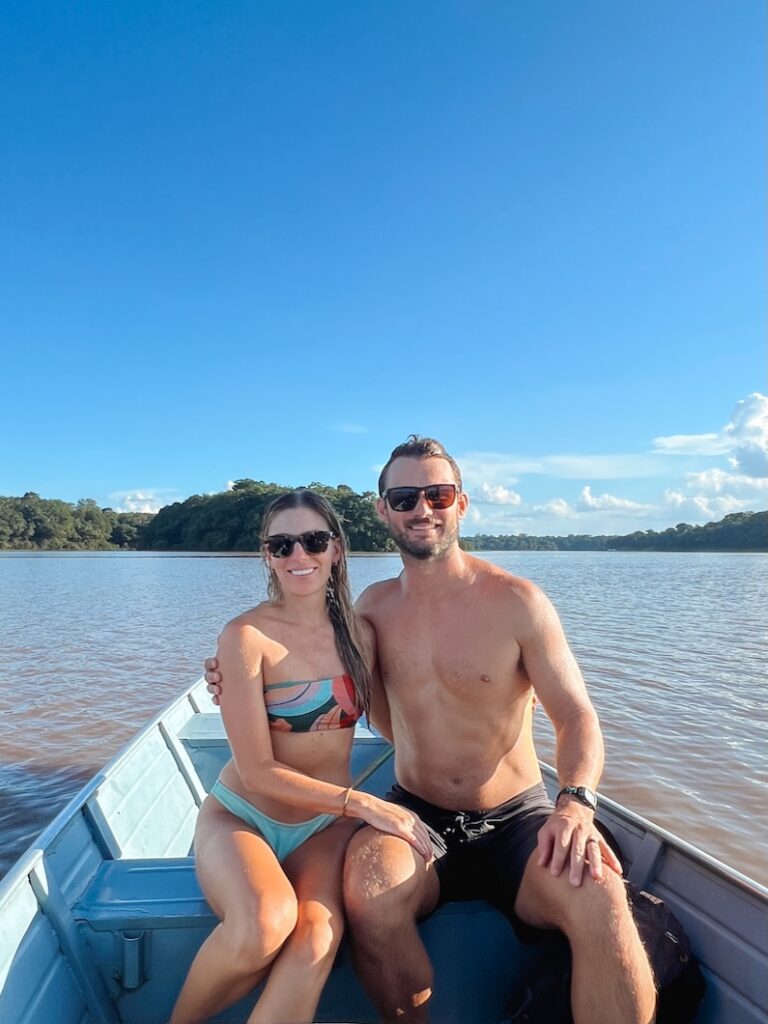
What else I loved about our stay at the Dolphin Lodge in the Brazilian Amazon
The Local Guides
The local guides are known as Ribeirinhos or people who have traditionally lived close to the river in the Brazilian Amazon. They are incredibly knowledgeable about the Brazilian Amazon’s rivers, plants, and animals.
I particularly appreciated learning about the local guides’ way of life, living on the river’s edge for generations.
Here, stable electricity arrived only 10 years ago, and wifi (Starlink) in 2021. Many of the guides live just up the Moramí River and proudly pointed to their homes when we would pass them during excursions.
The Dolphin Lodge arranges for guests to visit a local Caboclo family home. A Caboclo is defined as a Brazilian with both European and American-Indian heritage.
During the visit to the Caboclo home, we had the opportunity to view the small-scale farming practices, including how the toxic Mandioca plant is harvested for consumption. This is the same plant discovered by the Spanish and Portuguese explorers who wrongly assumed it was safe to eat raw.
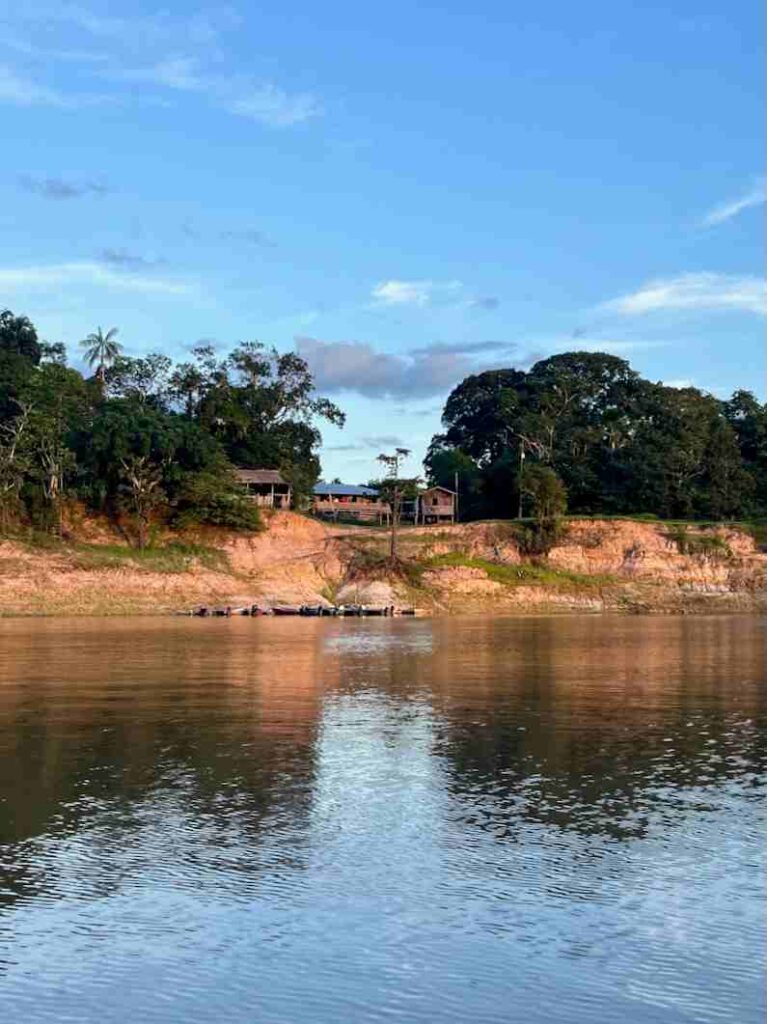
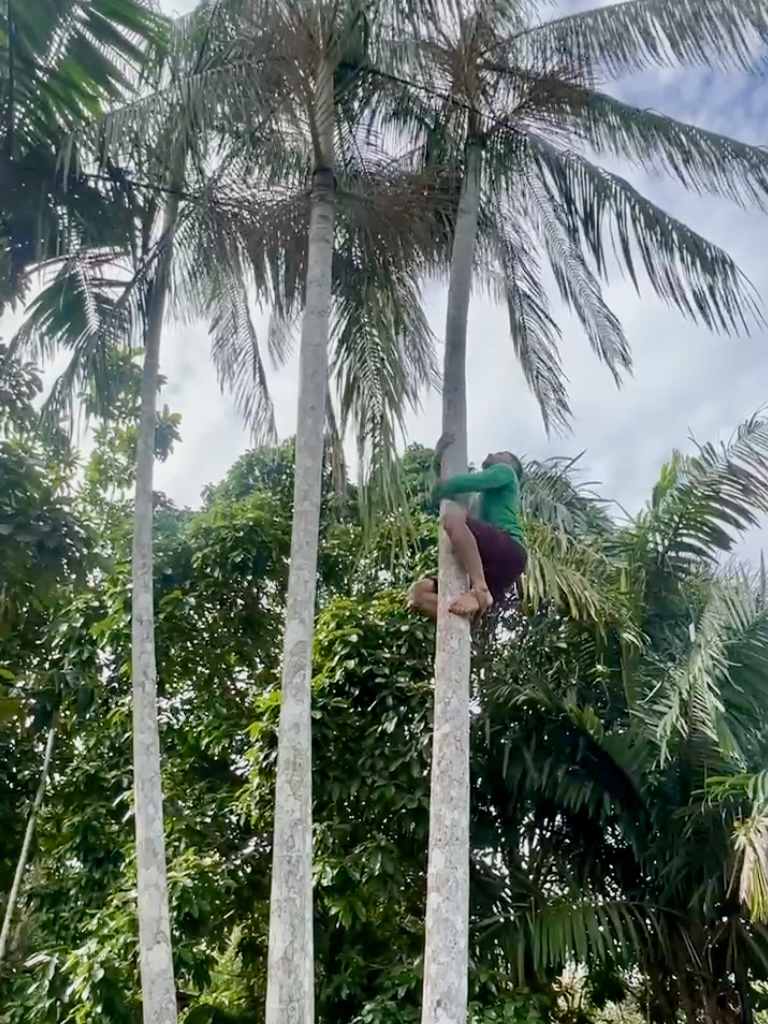
Time on the river
I loved how much time we spent cruising the Moramí and other small rivers around the Dolphin Lodge.
There is a special peacefulness and serenity in these waters. It was reassuring to see an abundance of wildlife in the river and on its edges, it showed how healthy the river’s ecosystem is.
What I most value about the Dolphin Lodge is its rule against interactions or contact with the Tucuxi and Amazon River Dolphins. A quick Google Search shows countless photos of tourists feeding, petting, or even swimming with the dolphins.
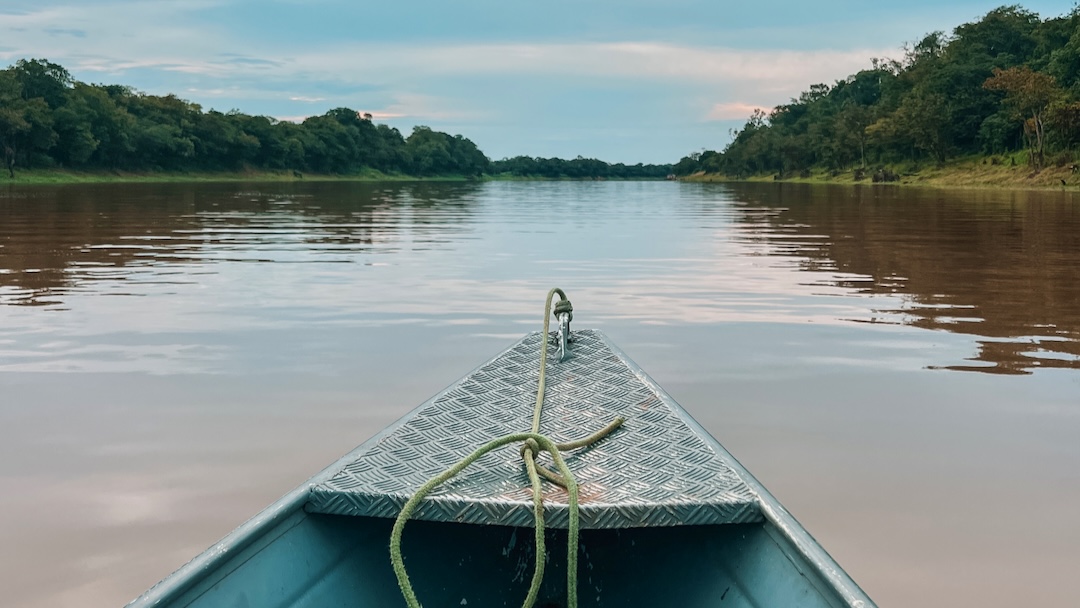
Meals at the Dolphin Lodge in the Brazilian Amazon
The meals at the Dolphin Lodge are exotic and plentiful.
If you like to eat fish, you will enjoy the freshly prepared local delicacies like Tucunaré and Tambaqui at lunch and Dinner.
Breakfasts include freshly squeezed juices like acerola, mango, or cupuaçu, fried eggs, fresh bread and cakes, tapioca, a variety of fruit, porridge, and ham and cheese slices.
If seafood is not your thing or you are a vegetarian, Dolphin Lodge also serves food like chicken, salads, rice, beans, pasta, soups, and french fries. The meals are served buffet style in the reception room.
In the same room is a bar where sodas, beer, wine, sparkling water, and caipirinhas are available for purchase. Drinking water is always available at no cost.
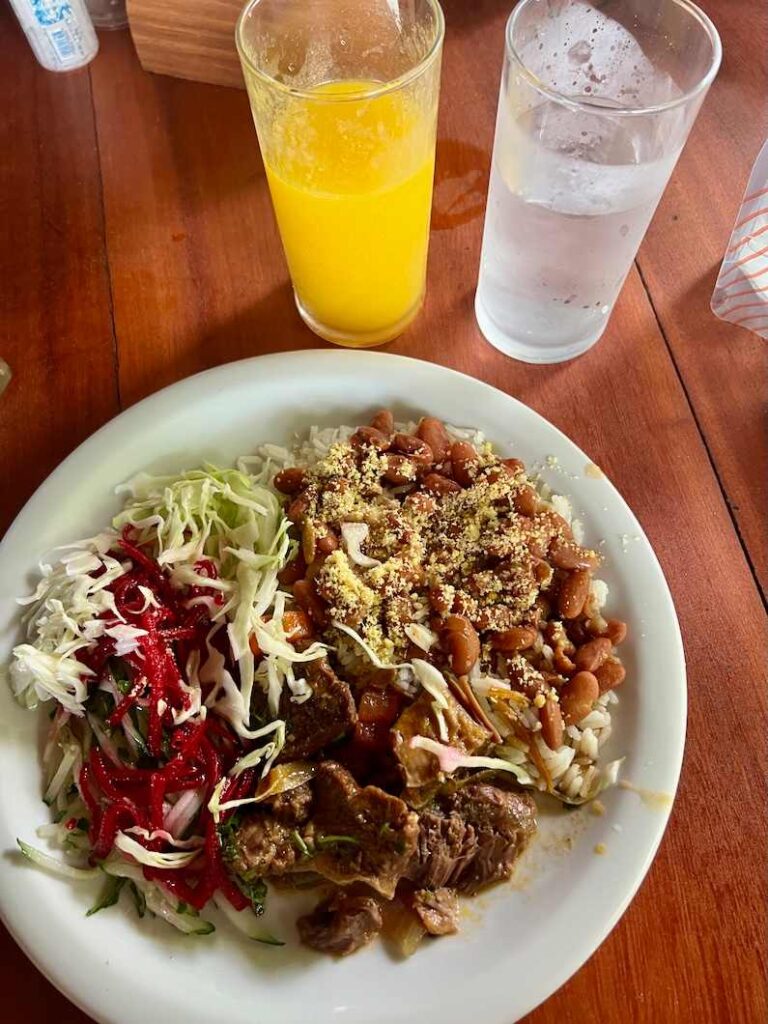
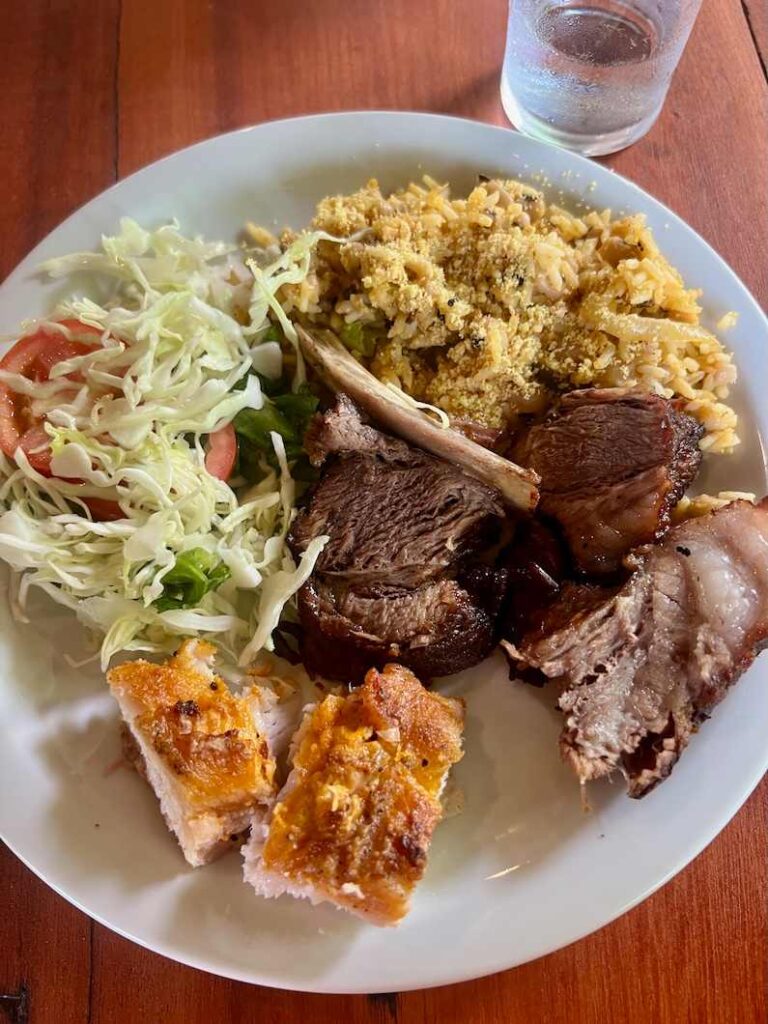
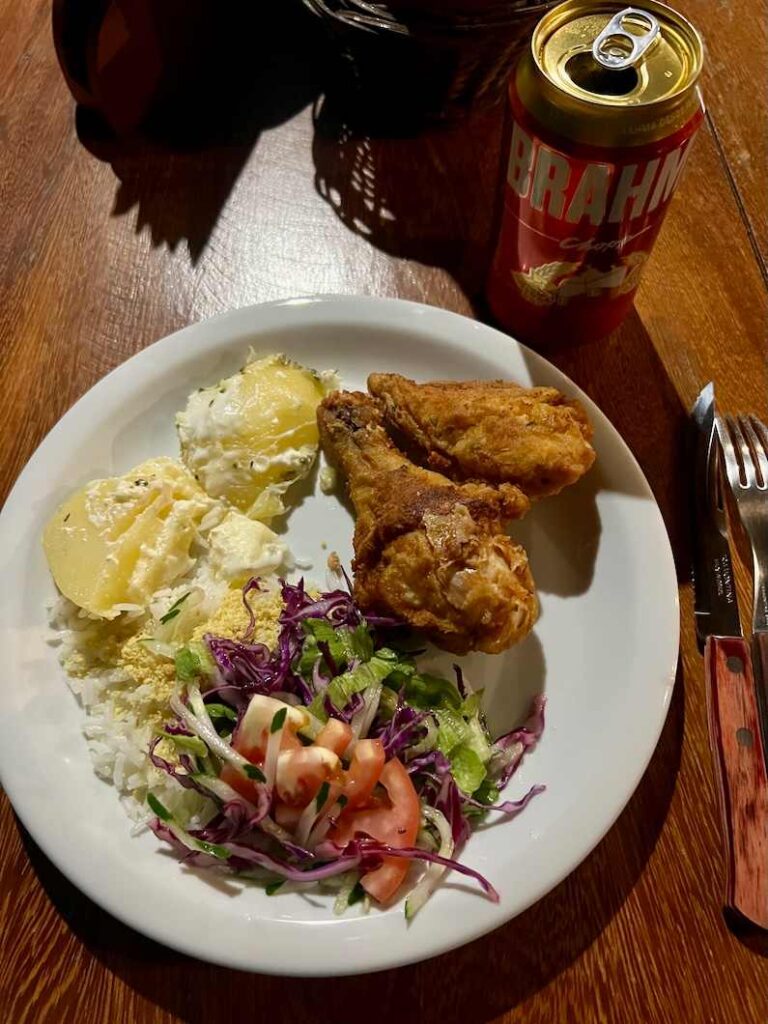
What to Read Before Visiting the Brazilian Amazon
I highly encourage visitors to the Brazilian or Peruvian Amazon to check out one of the following books before, during, or even after their trip.
This list of suggested Books for Travel to the Amazon has something for everyone.
Can only read one? My favorite is The Unconquered by Scott Wallace, quickly followed by River of Doubt by Candice Millard.

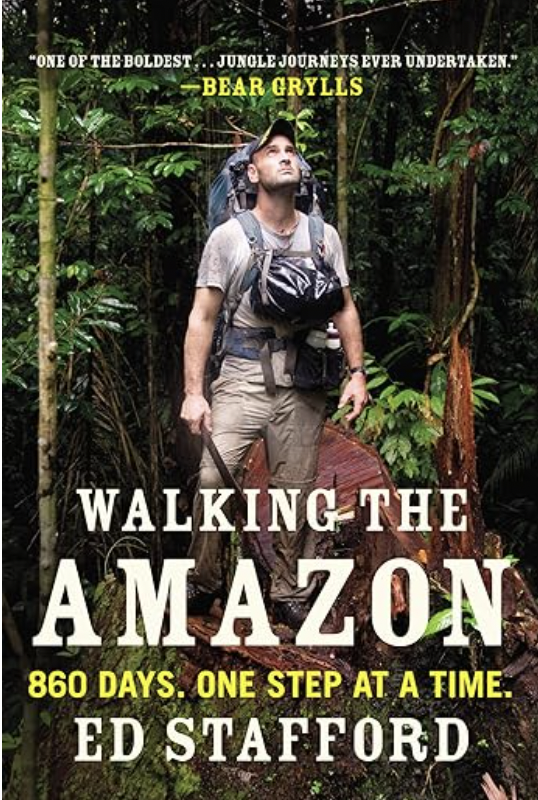
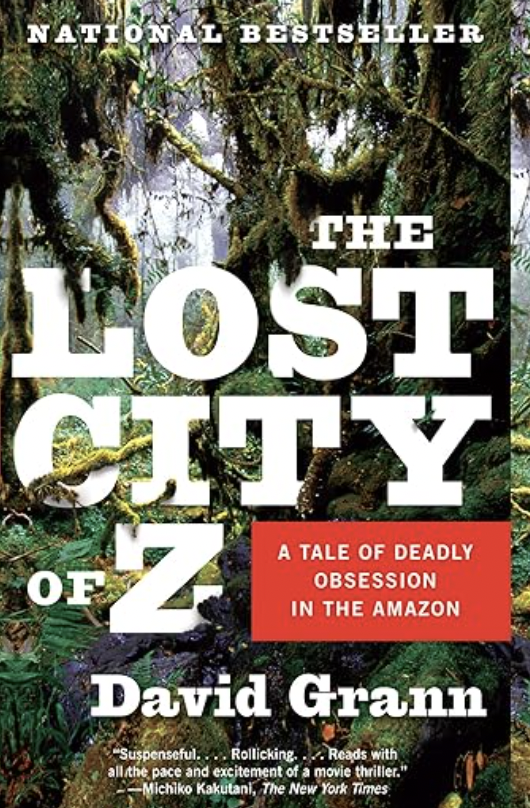
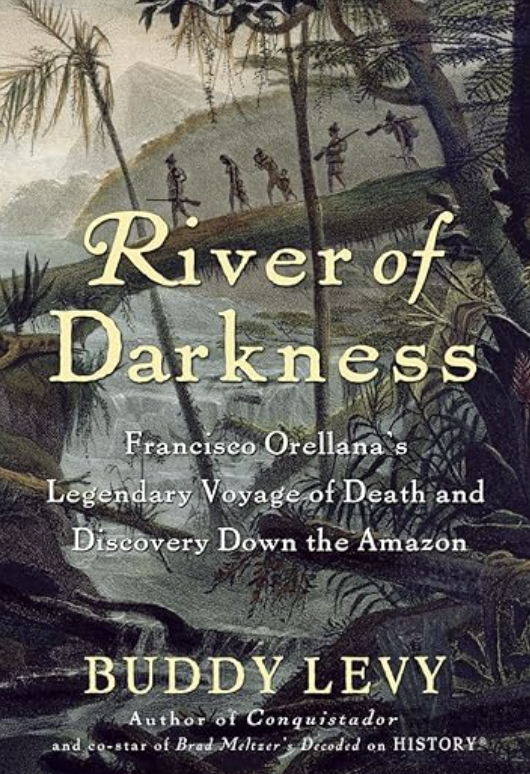


Where to stay in Manaus
Most visitors to the Amazon in Brazil will need to spend at least one night in Manaus on either the front or back end of their visit to the Dolphin Lodge (or another lodge outside of Manaus).
We chose to stay at the charming and very affordable Seringal Hotel. The Seringal Hotel is a no-frills type of place but serves a great hot breakfast and is conveniently located near many of Manuas’ historic sights.
Other hotels in Manaus’ historic area to consider:
Another popular neighborhood to stay in is the Adrianópolis neighborhood.
It is a newer and more modern city area with excellent hotels like Mercure Manaus, Blue Tree Premium Manaus, and Intercity Manaus. The Manauara Shopping Center is within walking distance of many of these hotels.
More hotels in Manaus
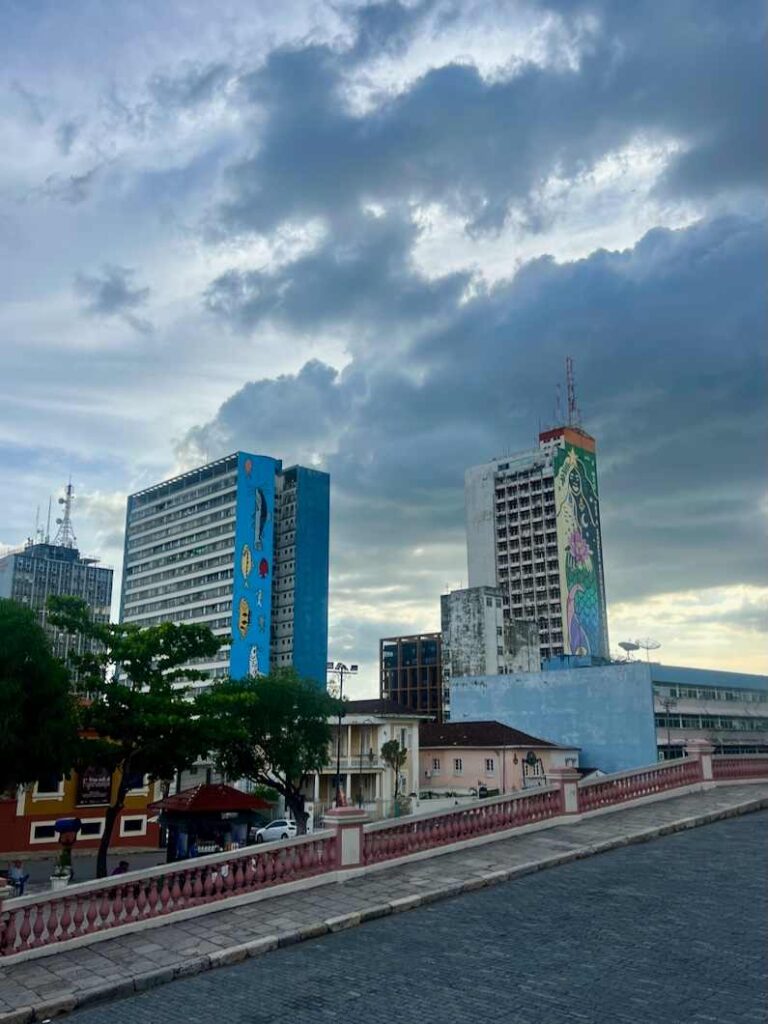
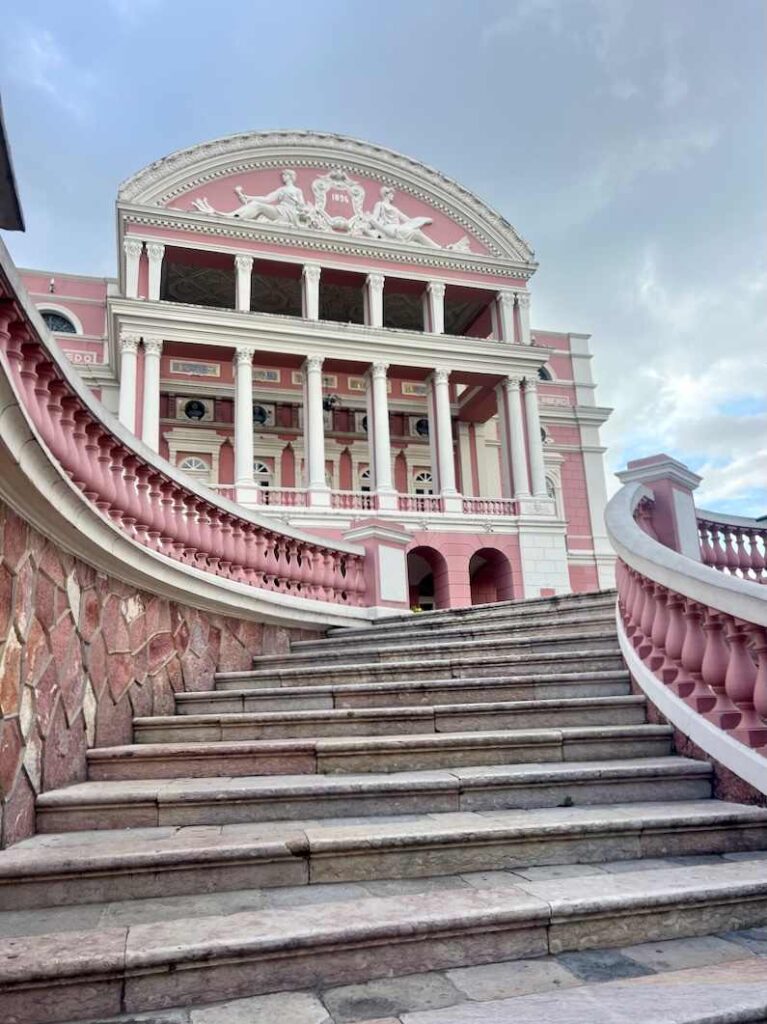
Where to go from Manaus
There are several places to travel to from Manaus!
My number one recommendation is Alter do Chão.
This charming river town can be reached by airplane (Manaus to Santarém) or by Amazon River ferry from Manaus to Santarém for a more authentic Amazon journey.
From Santarém, Alter do Chão is just a 40-minute cab ride. Read about 10 Amazing Things to Do in Alter do Chão.
The next city I recommend tourists visit after a stay in the Amazon Rainforest is Belém. This is the capital city of the state of Pará.
Belém is famous for its traditional meal of unsweetened Açaí and fried fish served daily at its markets. Check out the 1o very best things to do while in Belém.
Have even more time to spend in Brazil? Continue east to São Luis, Lençois Maranhense, Parnaíba, and Jericoacoara.
I promise you won’t be disappointed in the natural beauty in this region of Brazil.
More places in Brazil to love

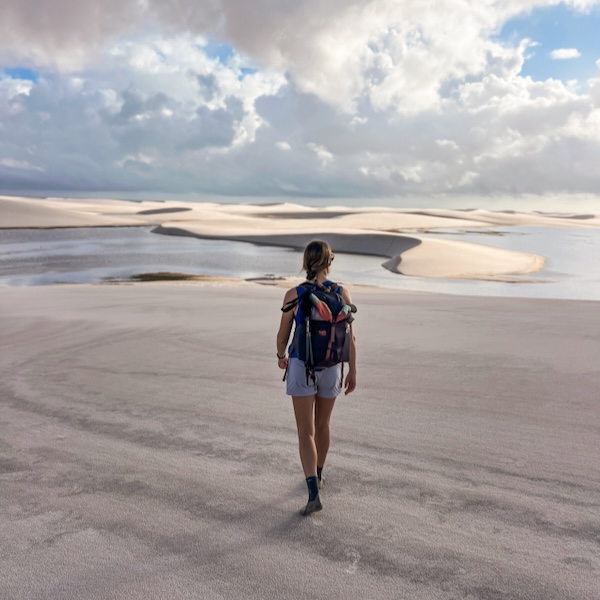
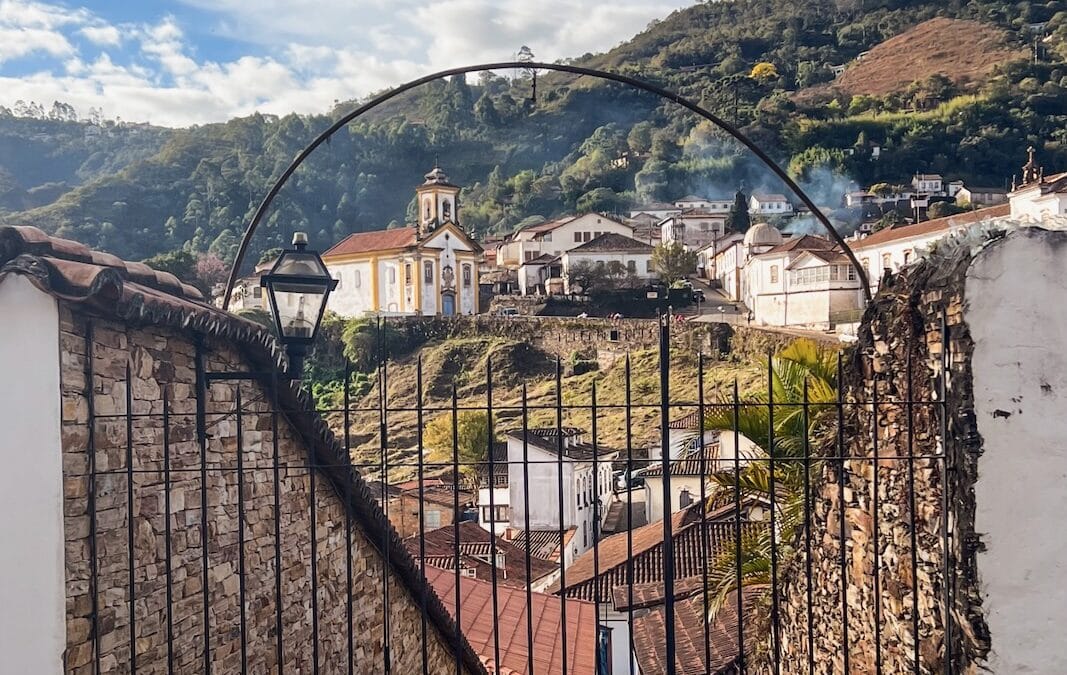
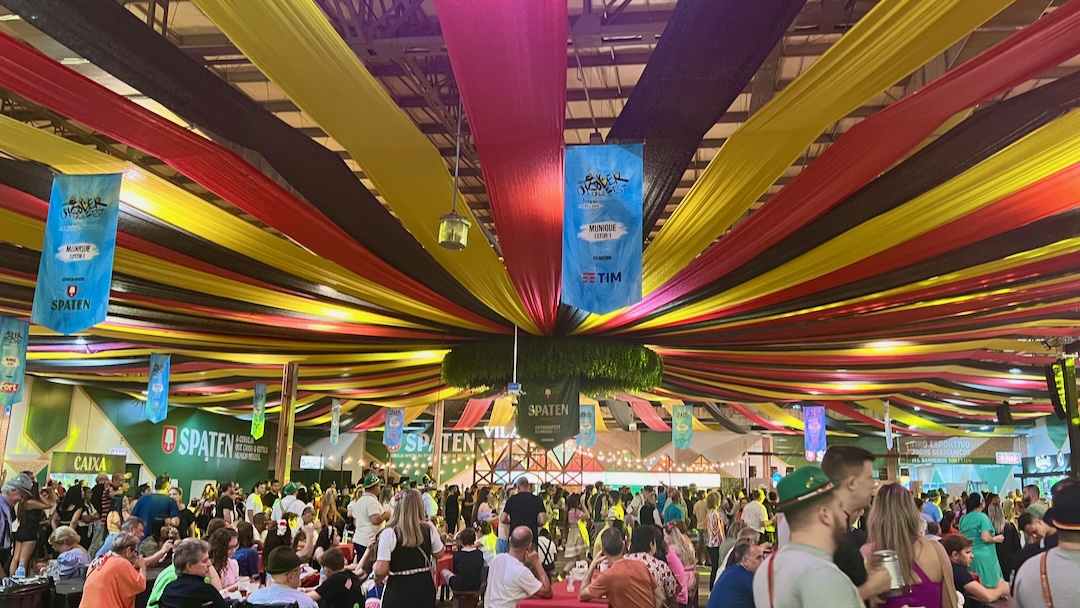
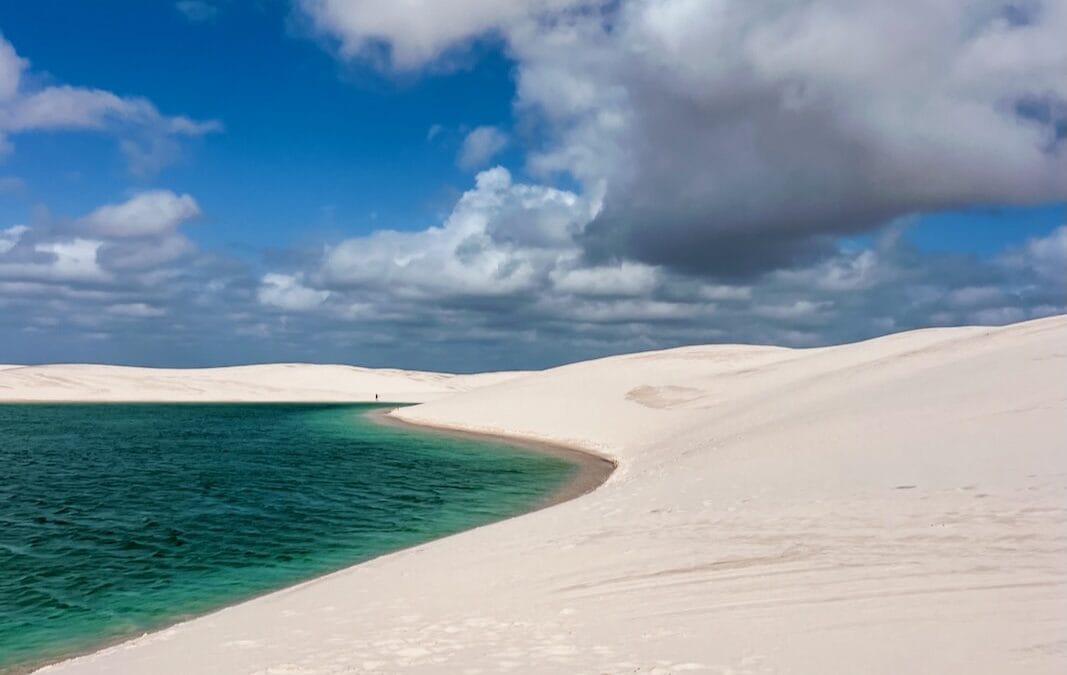
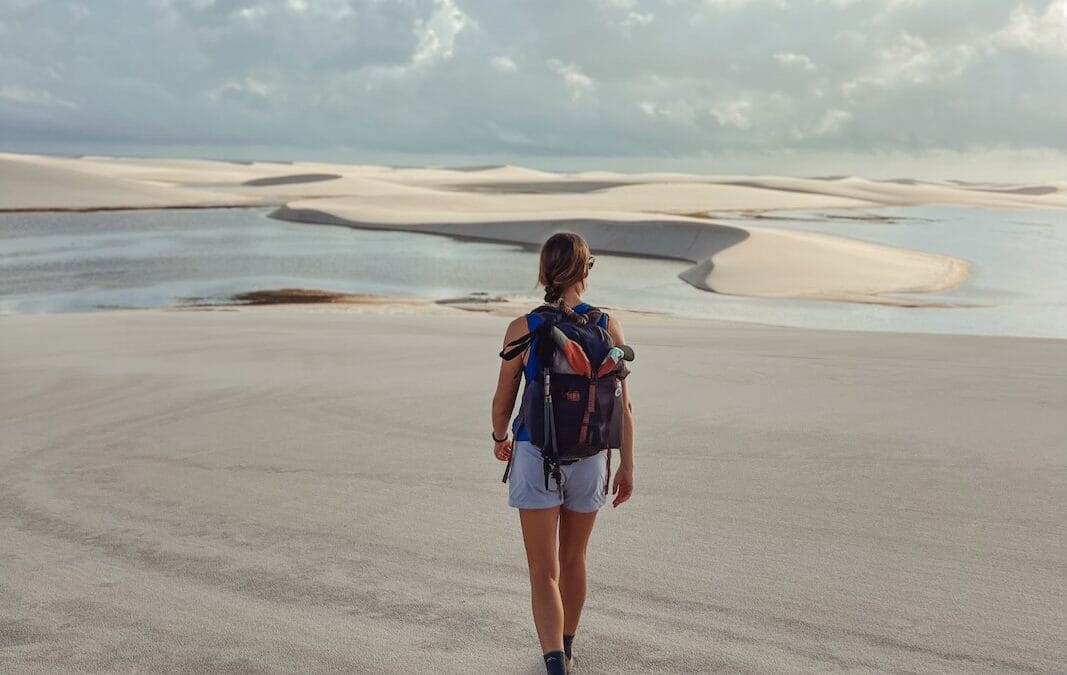
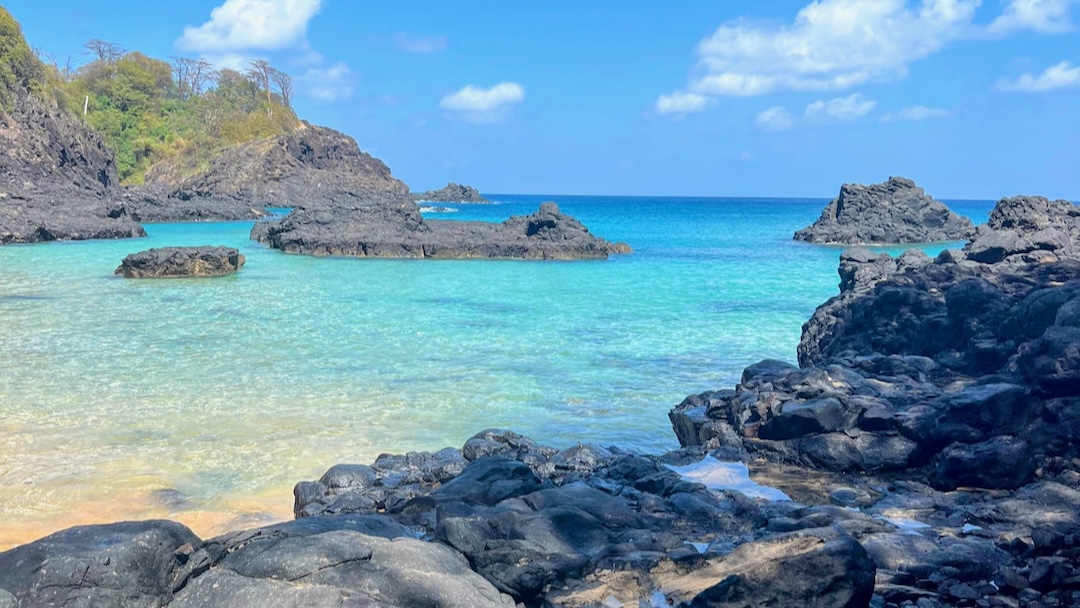
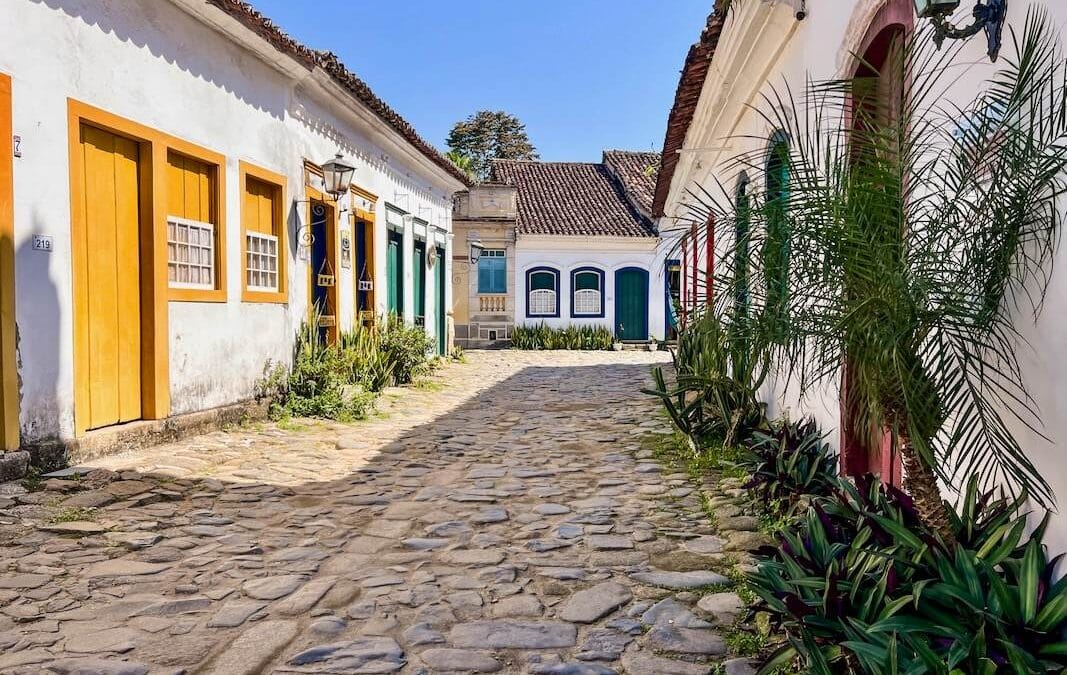
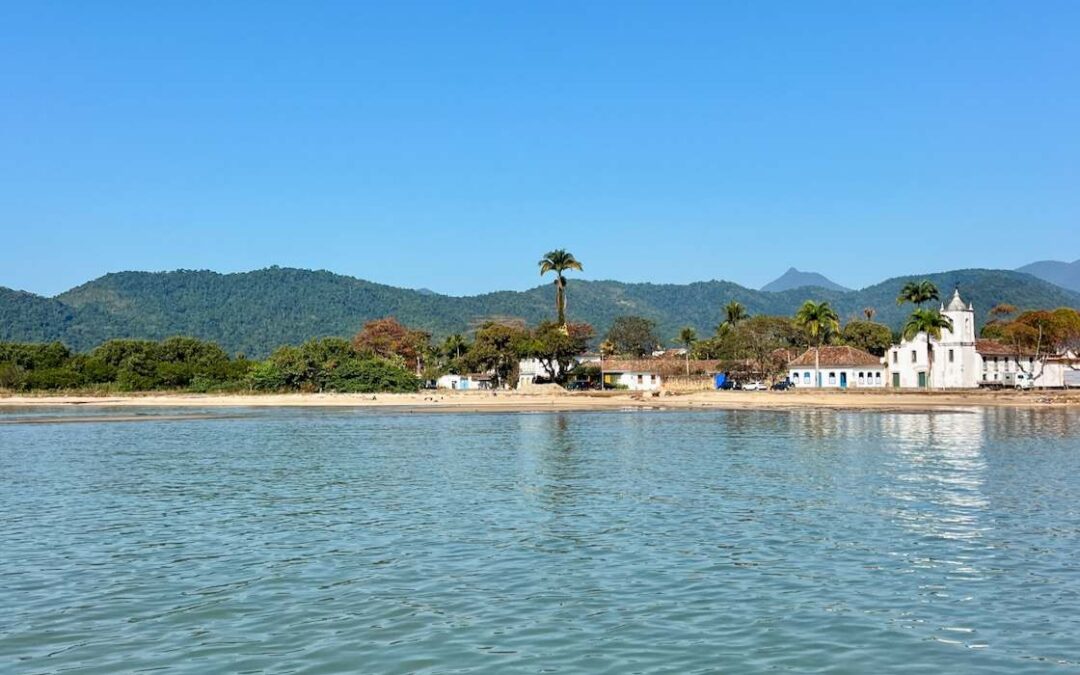
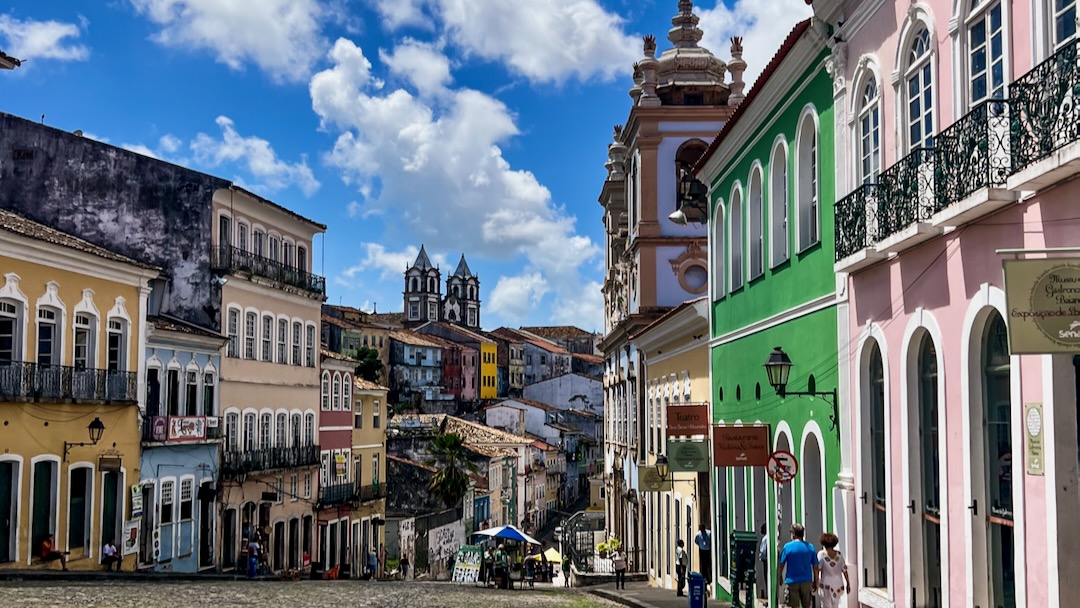
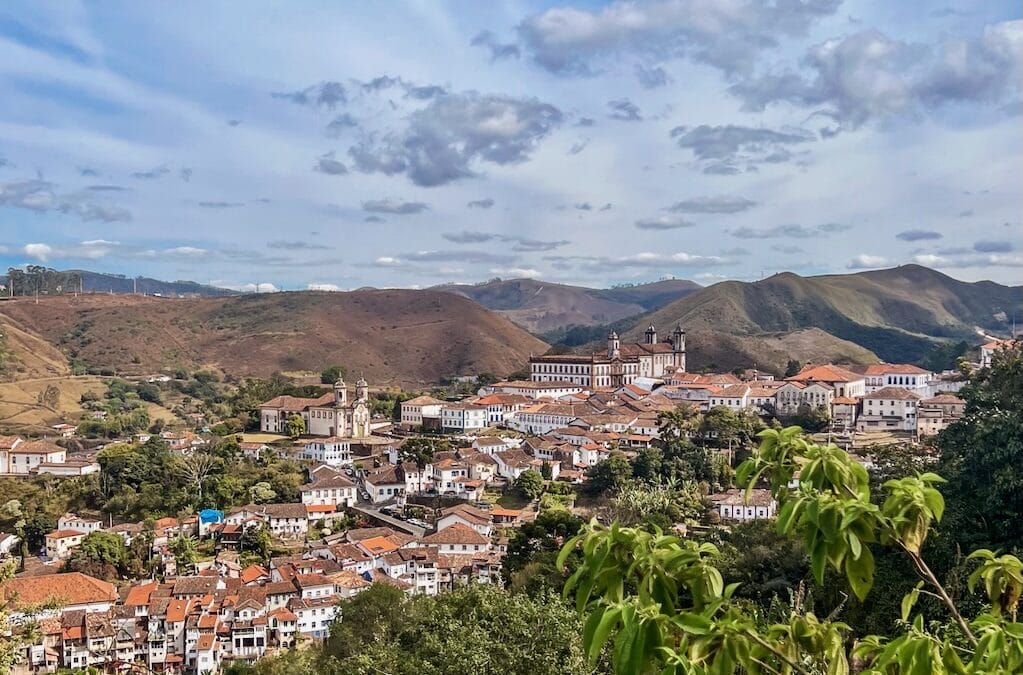
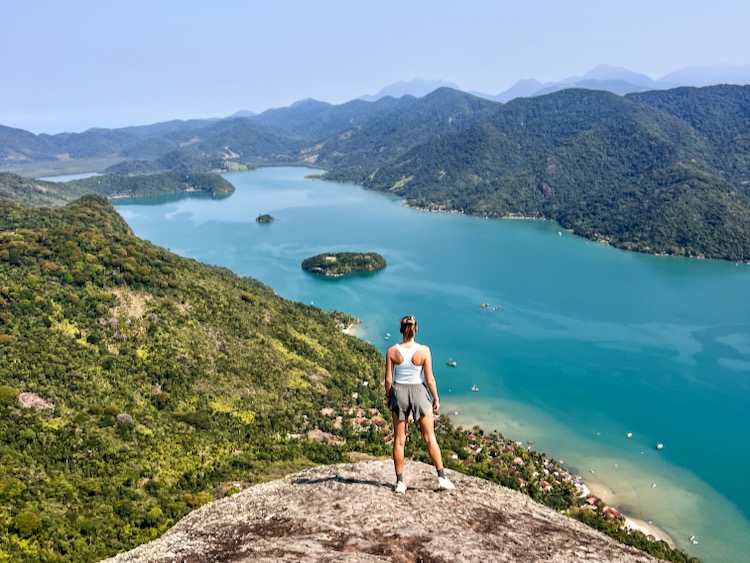
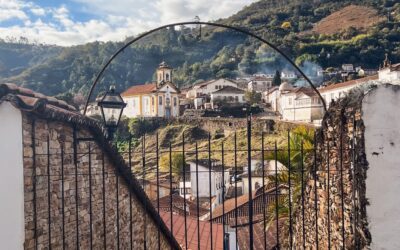
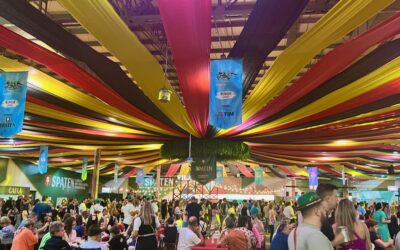
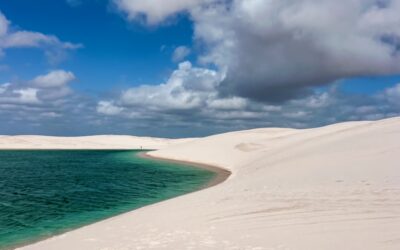
0 Comments